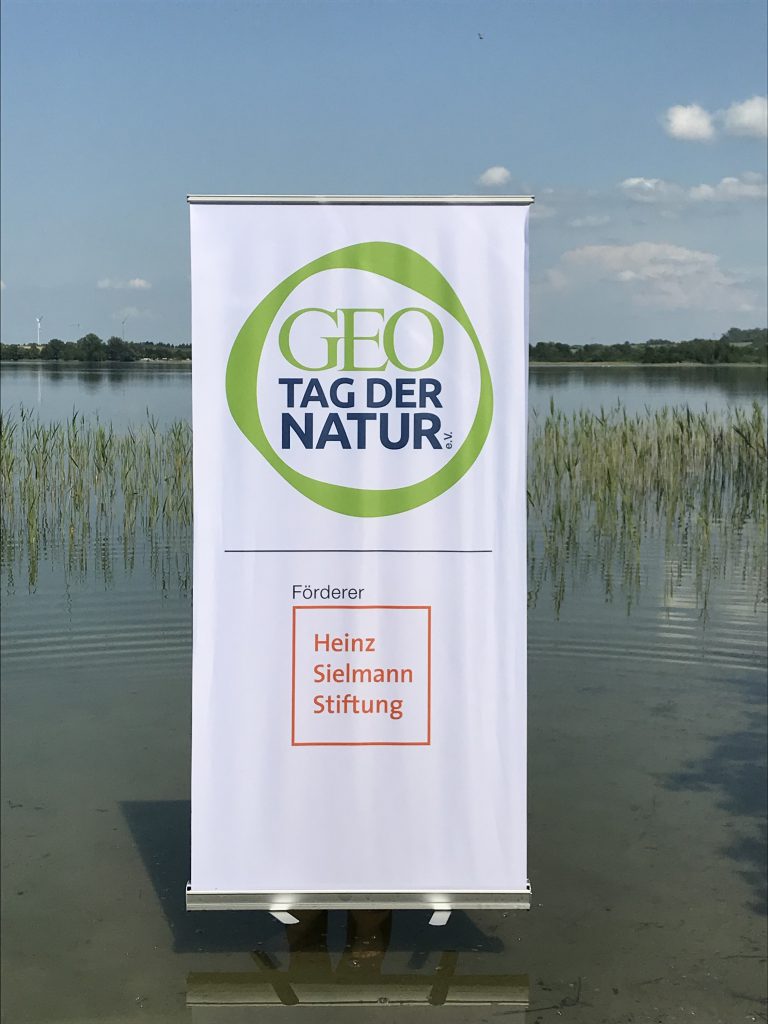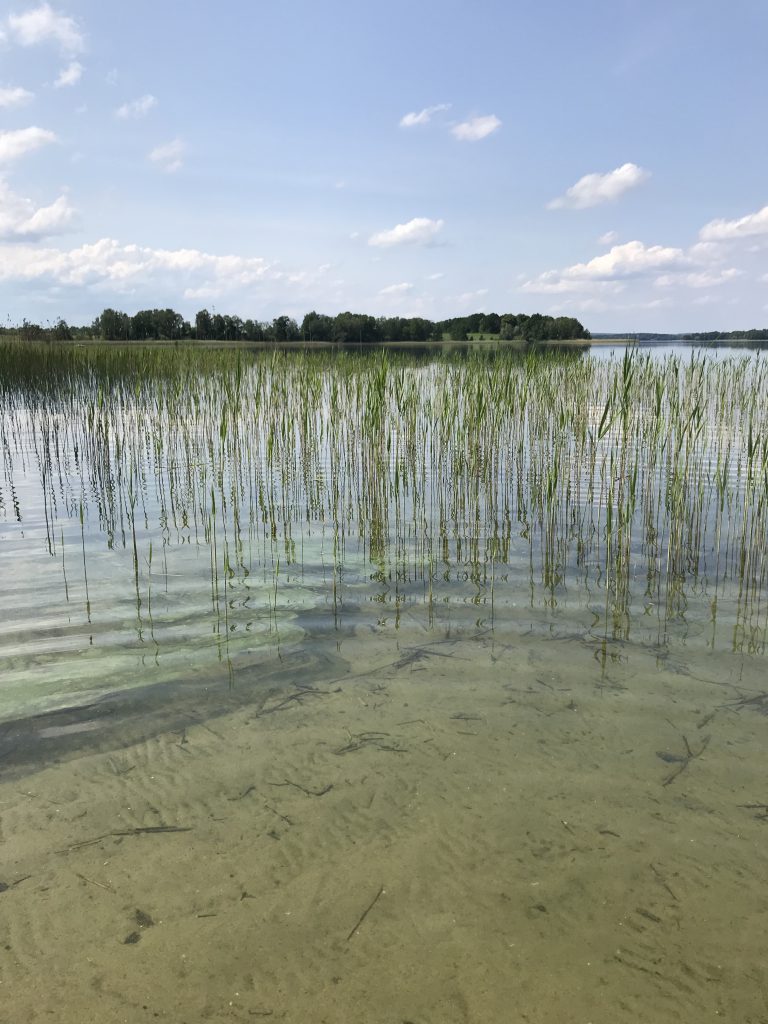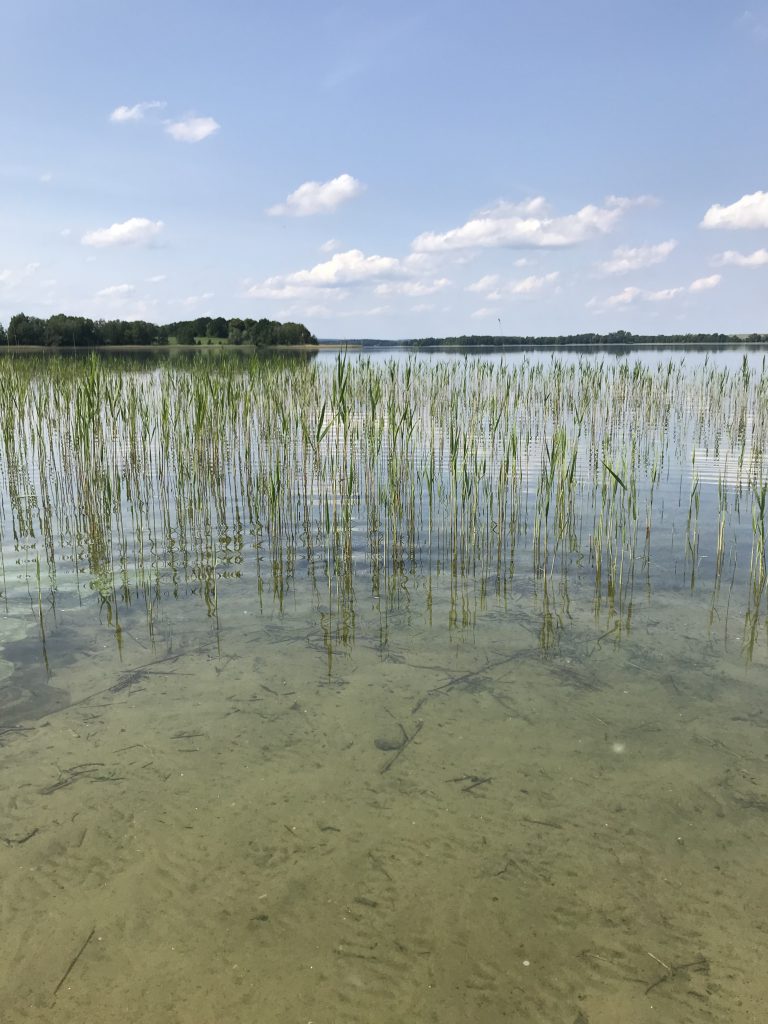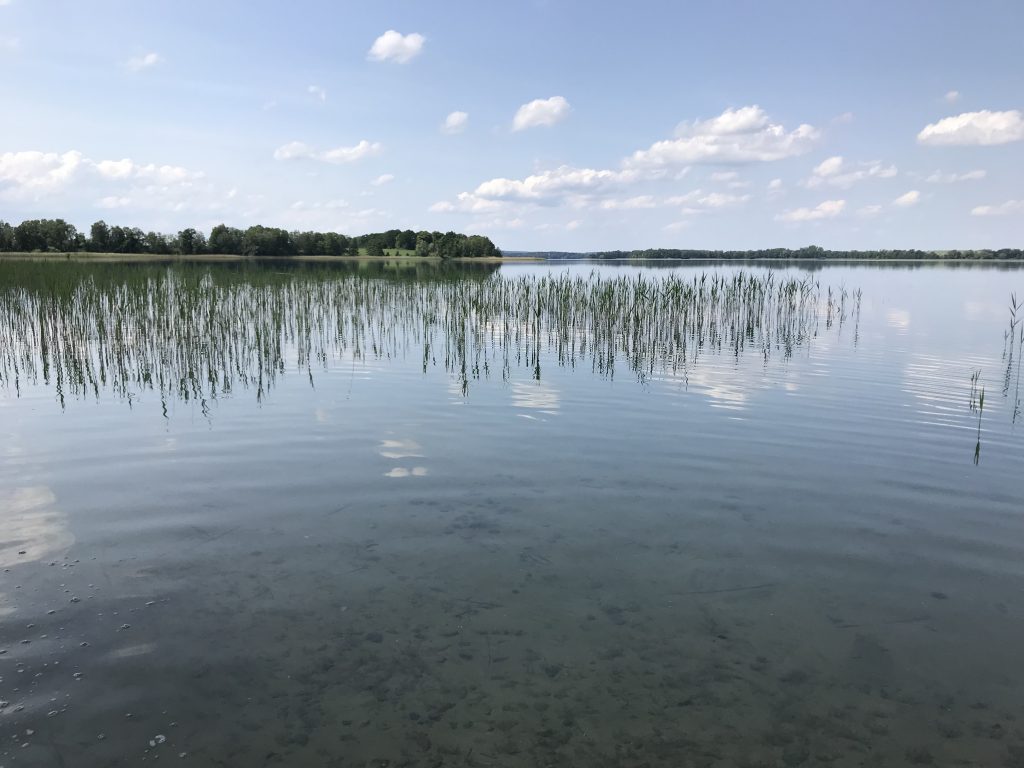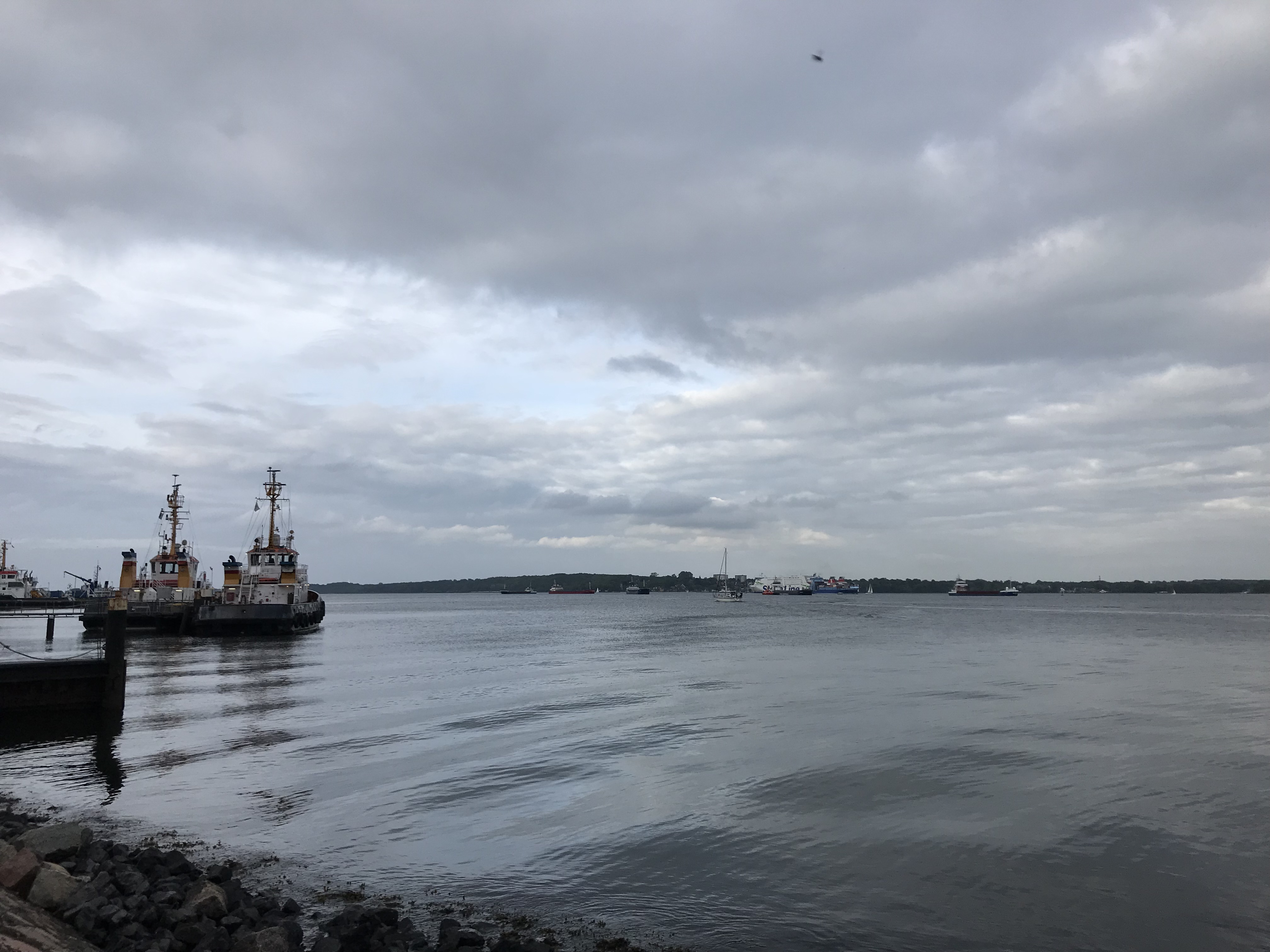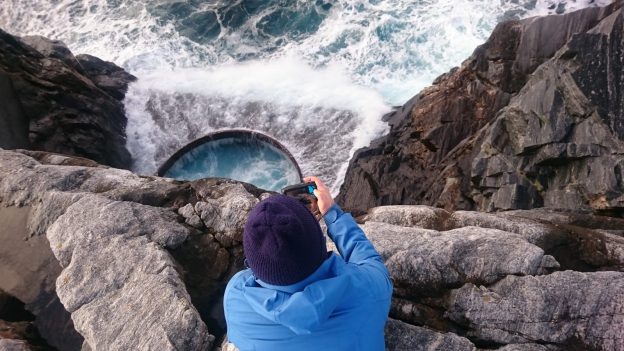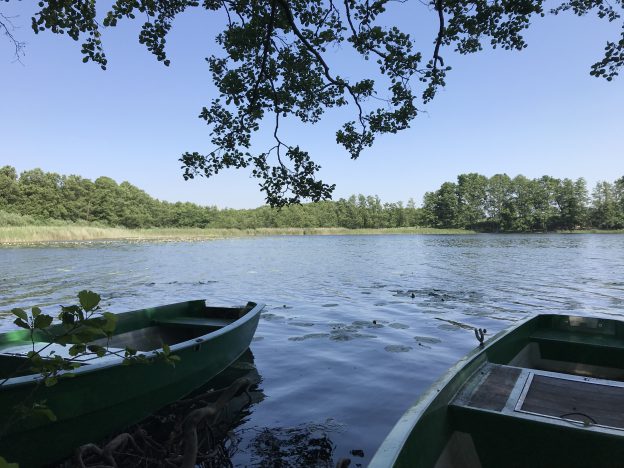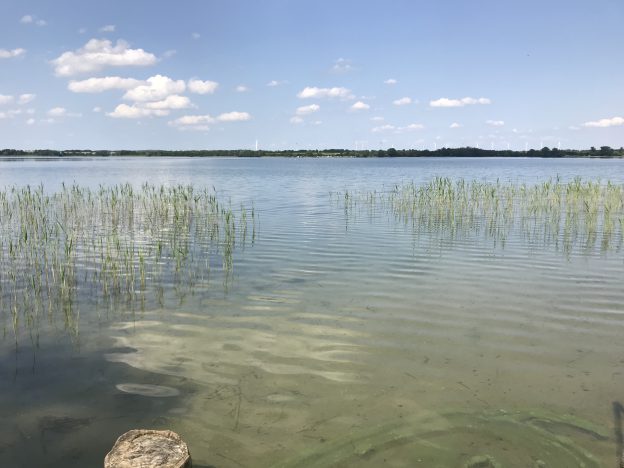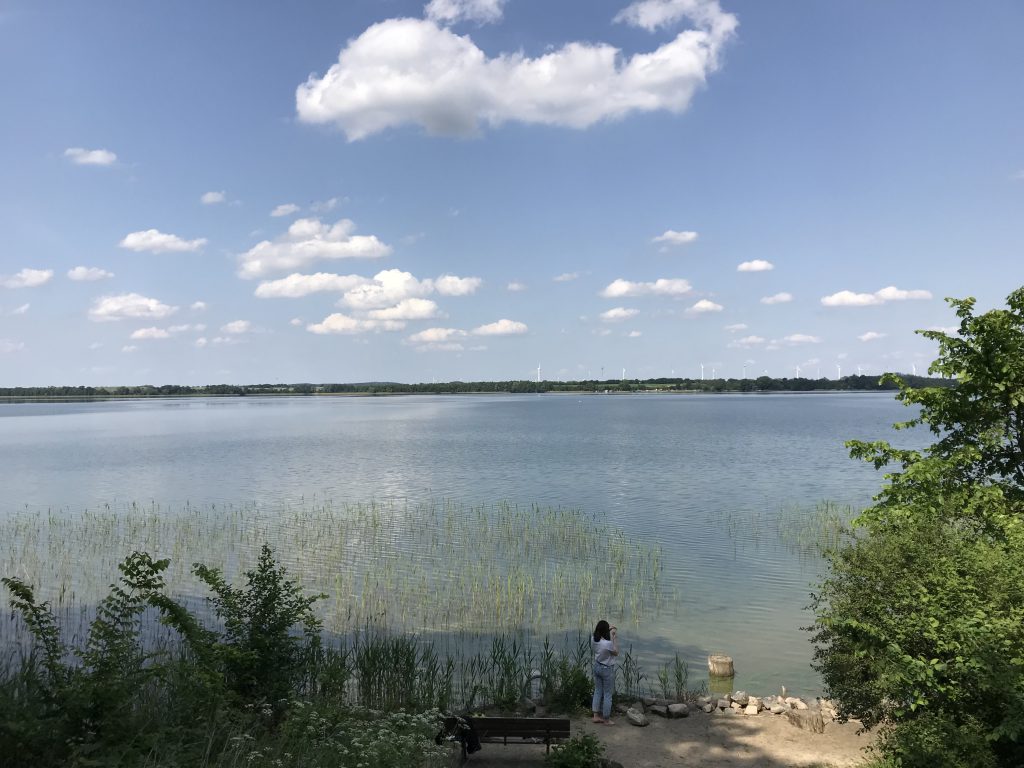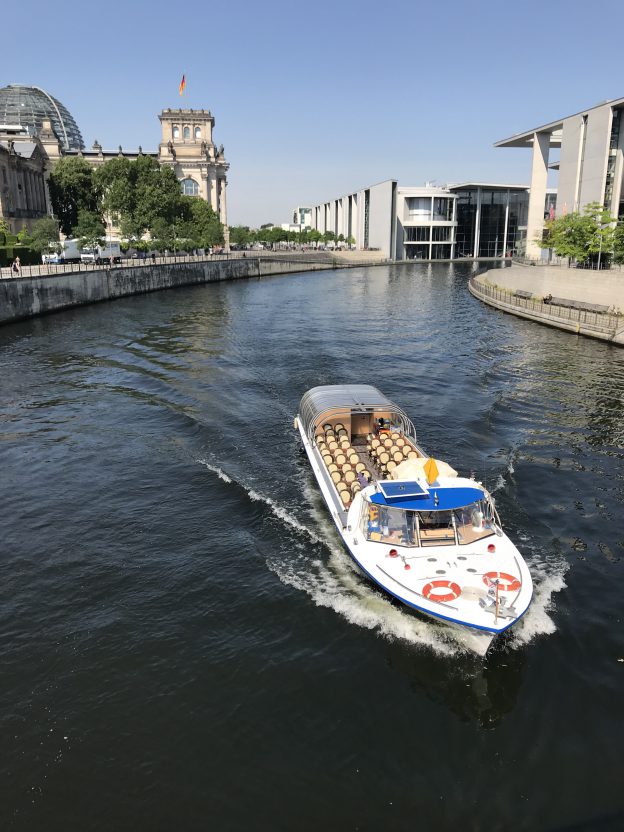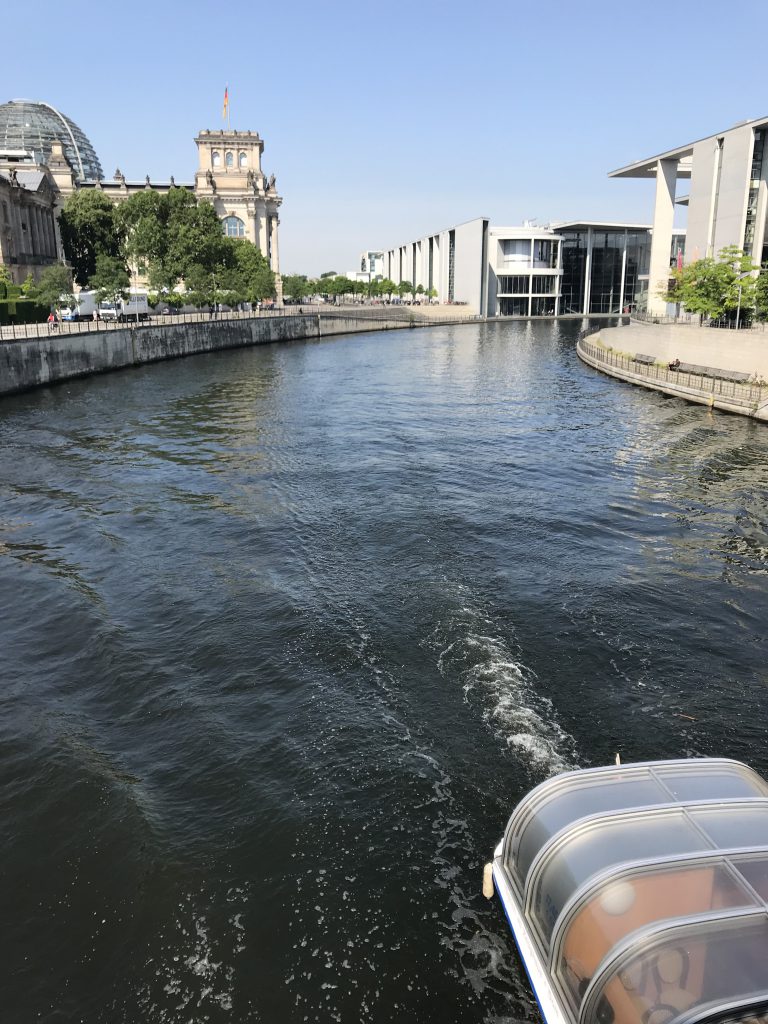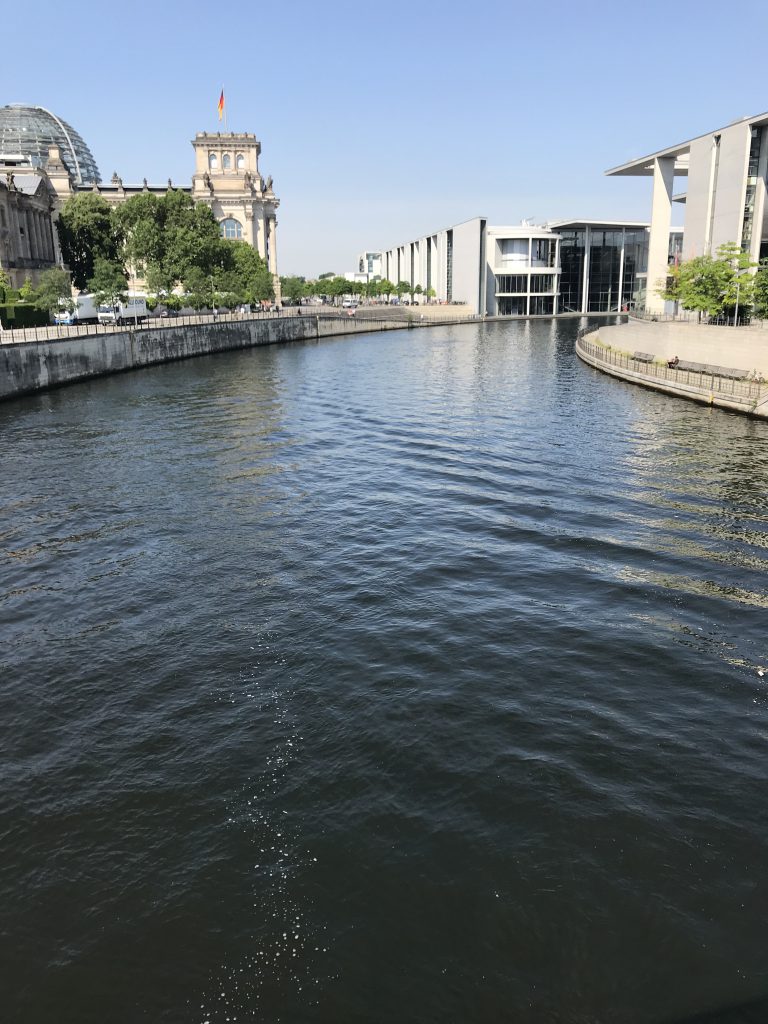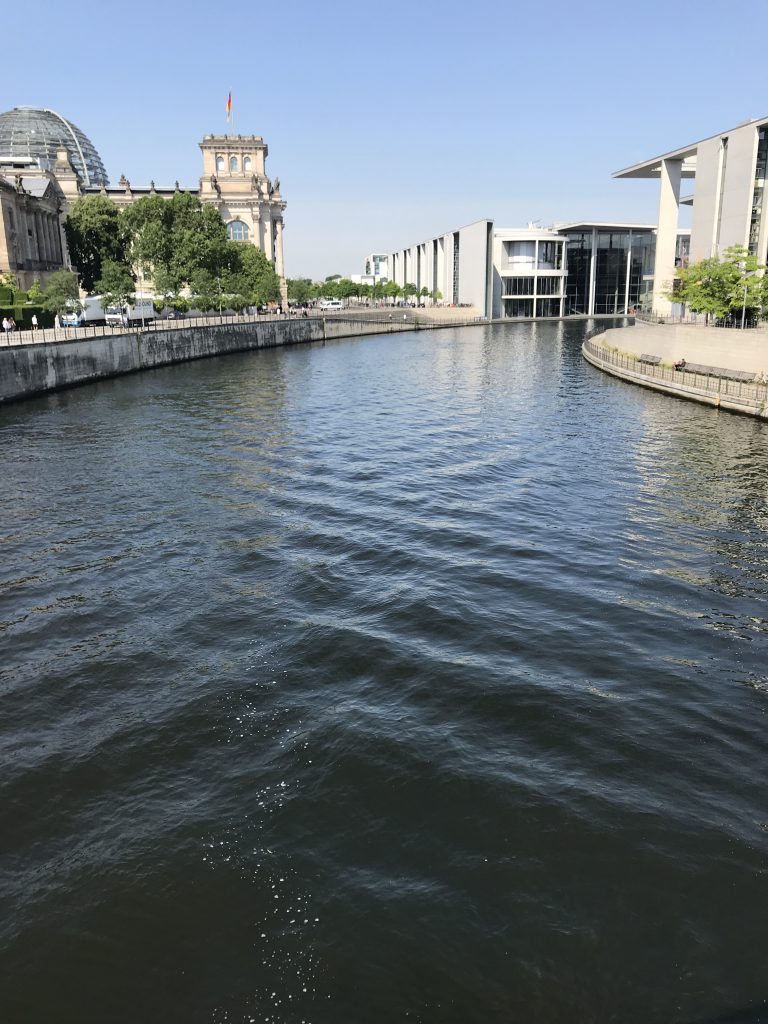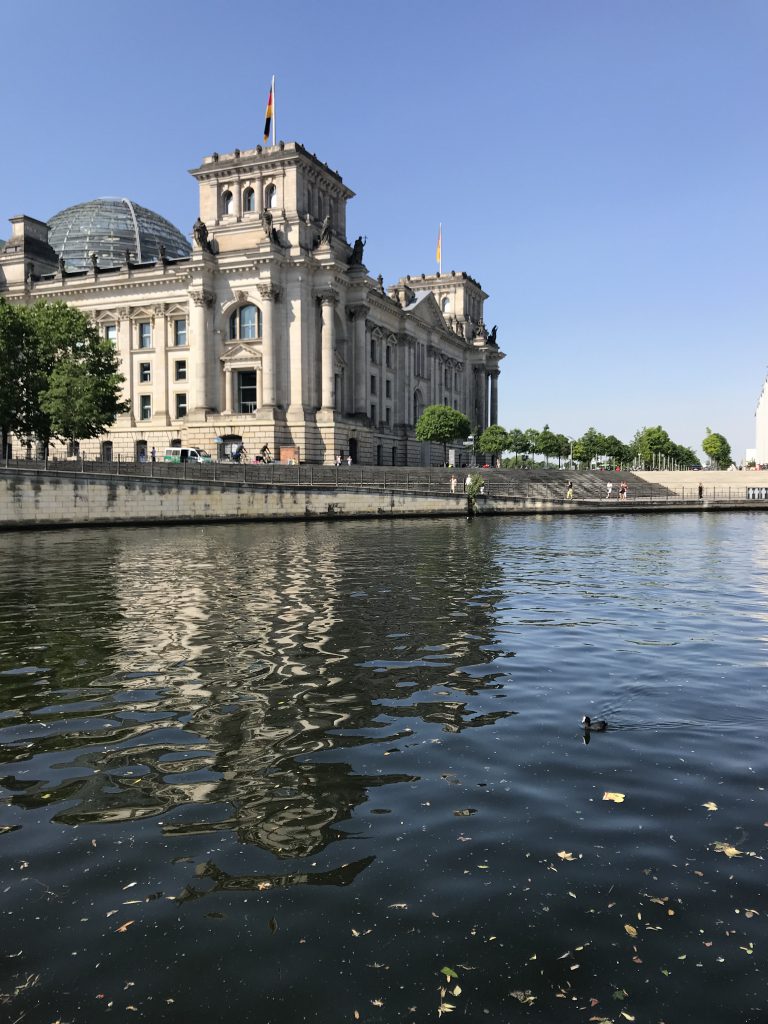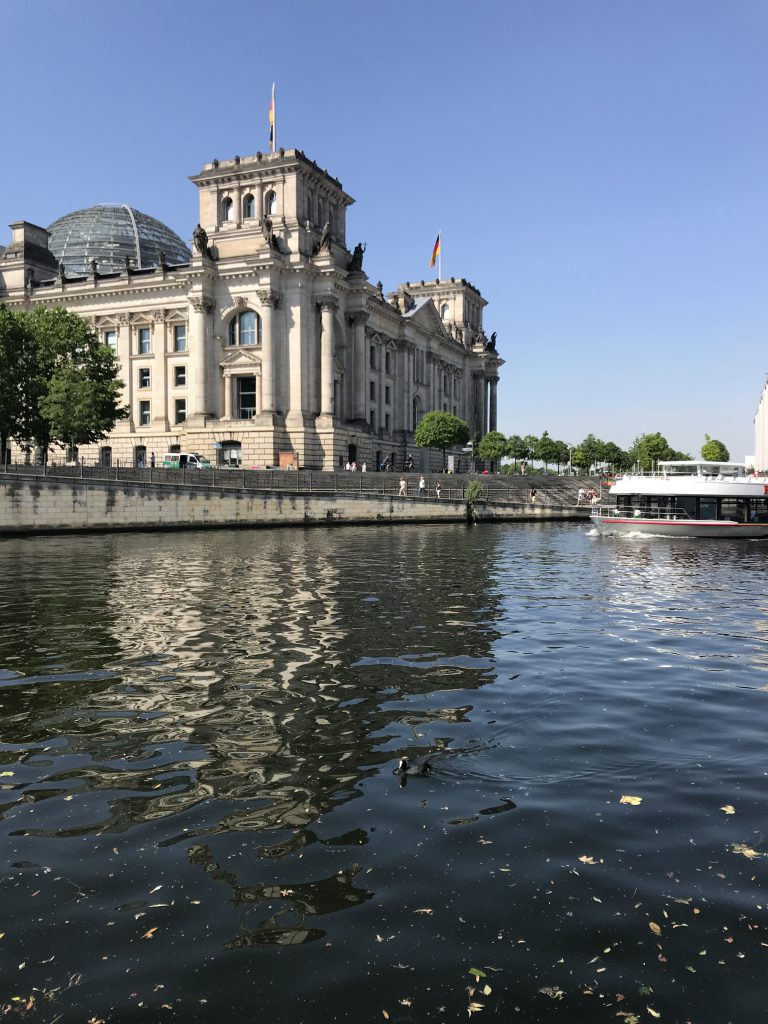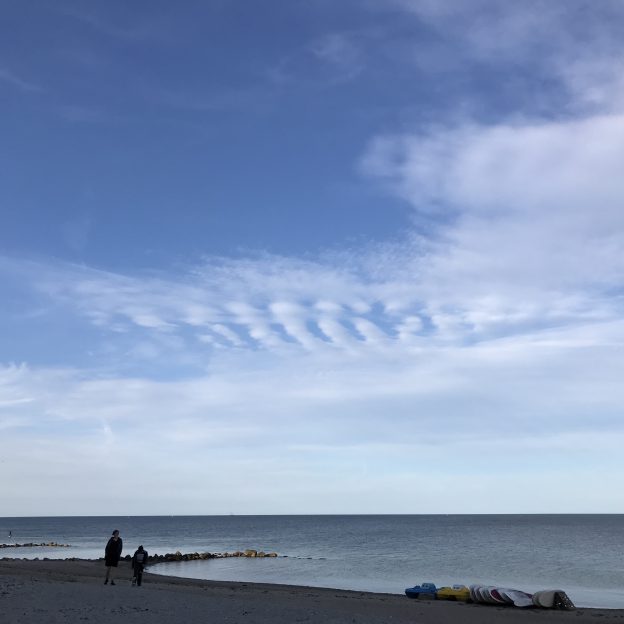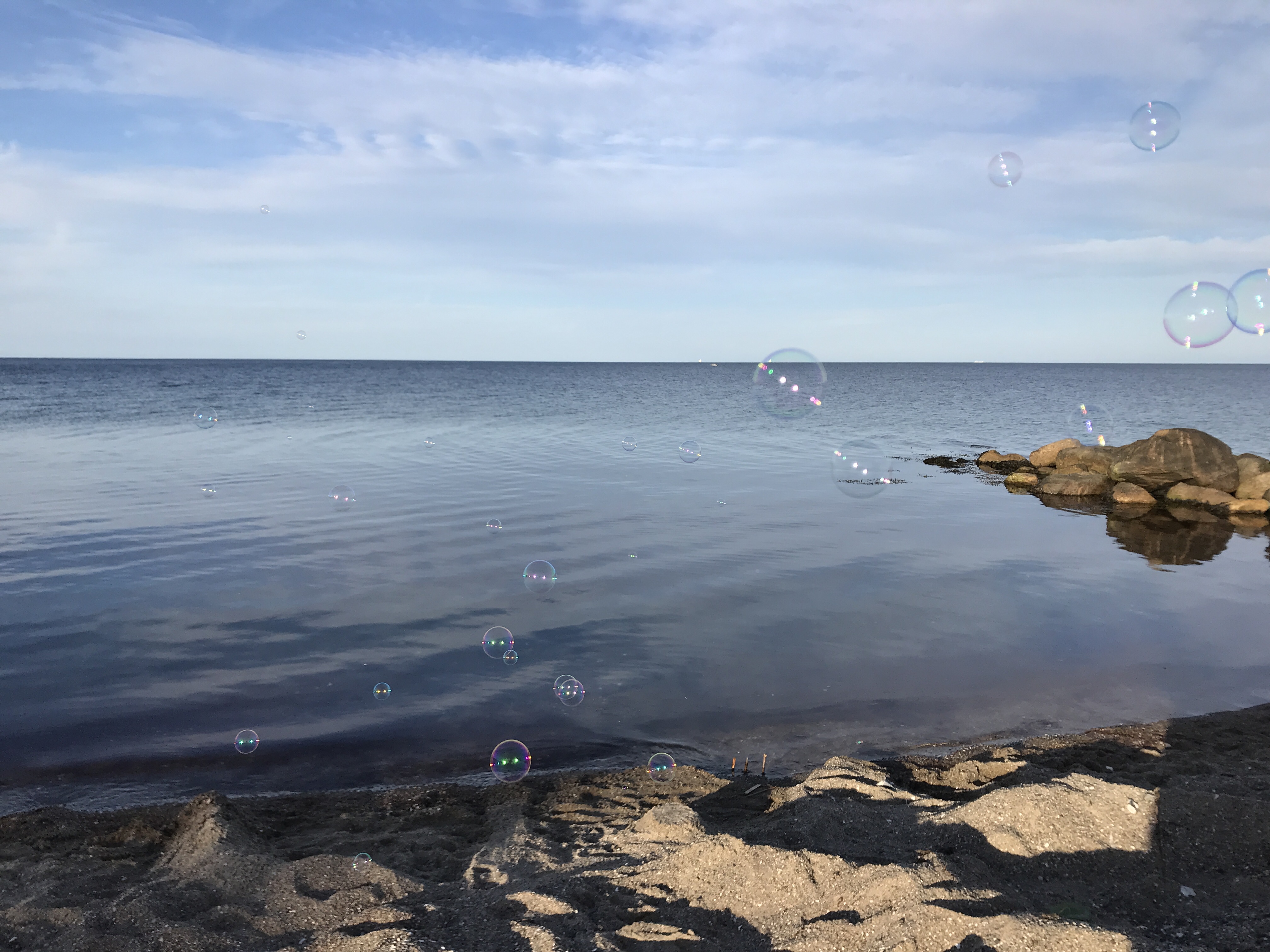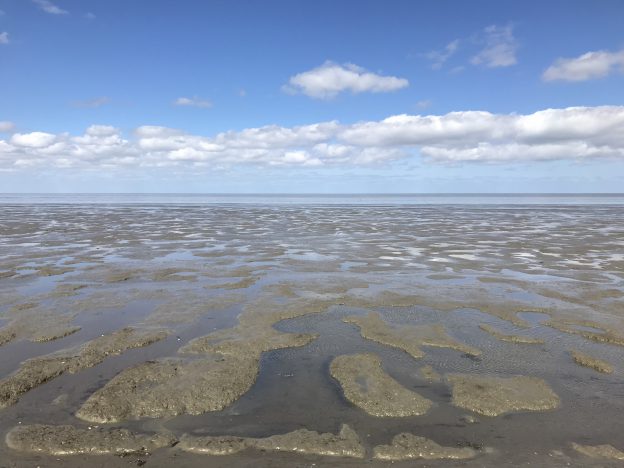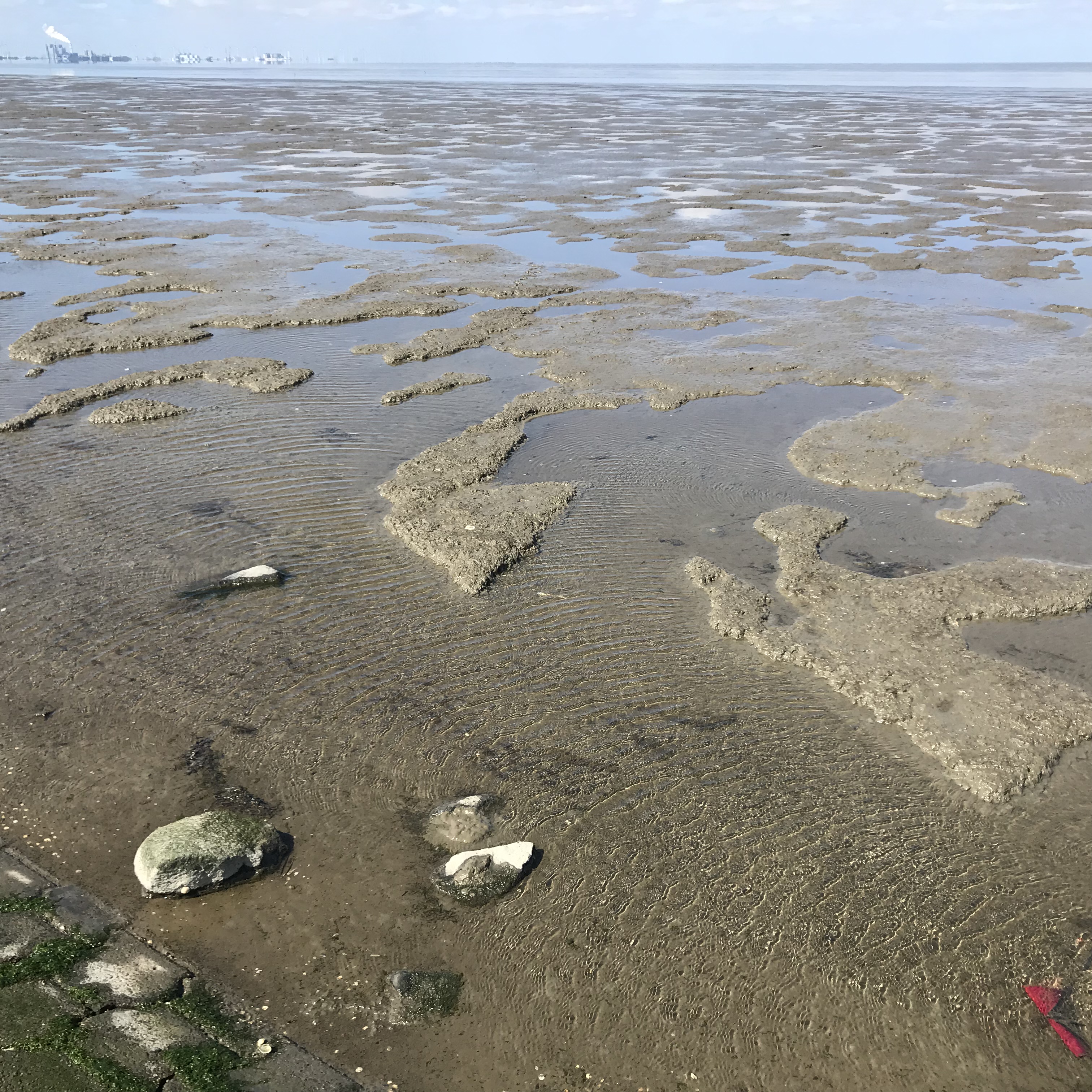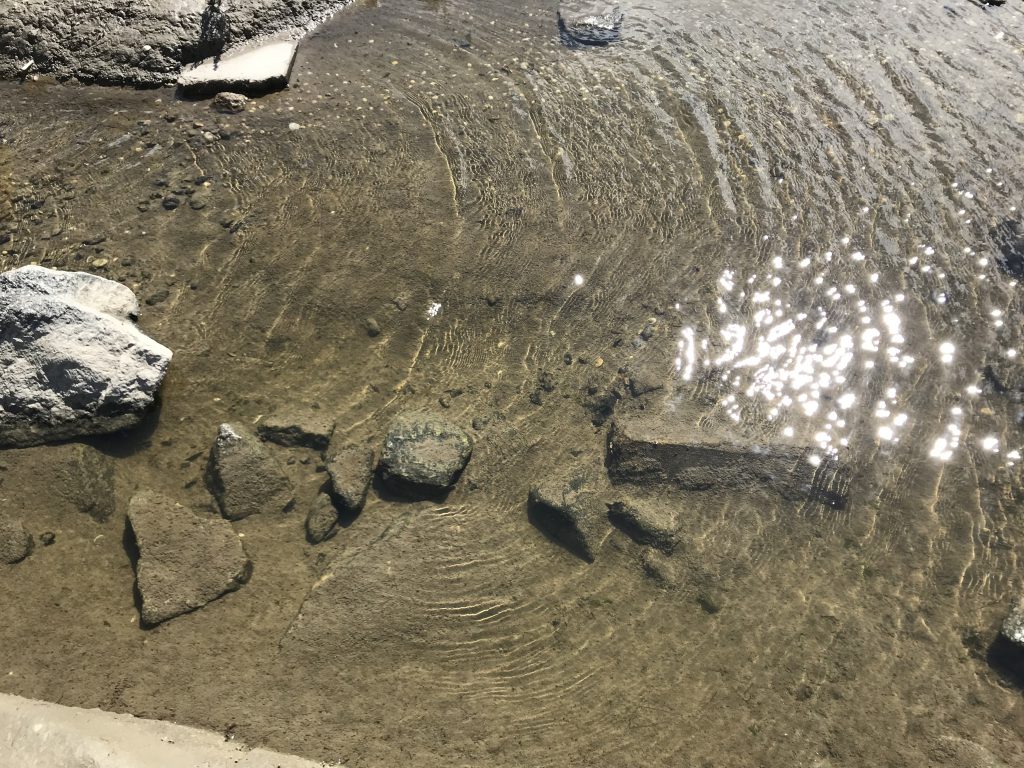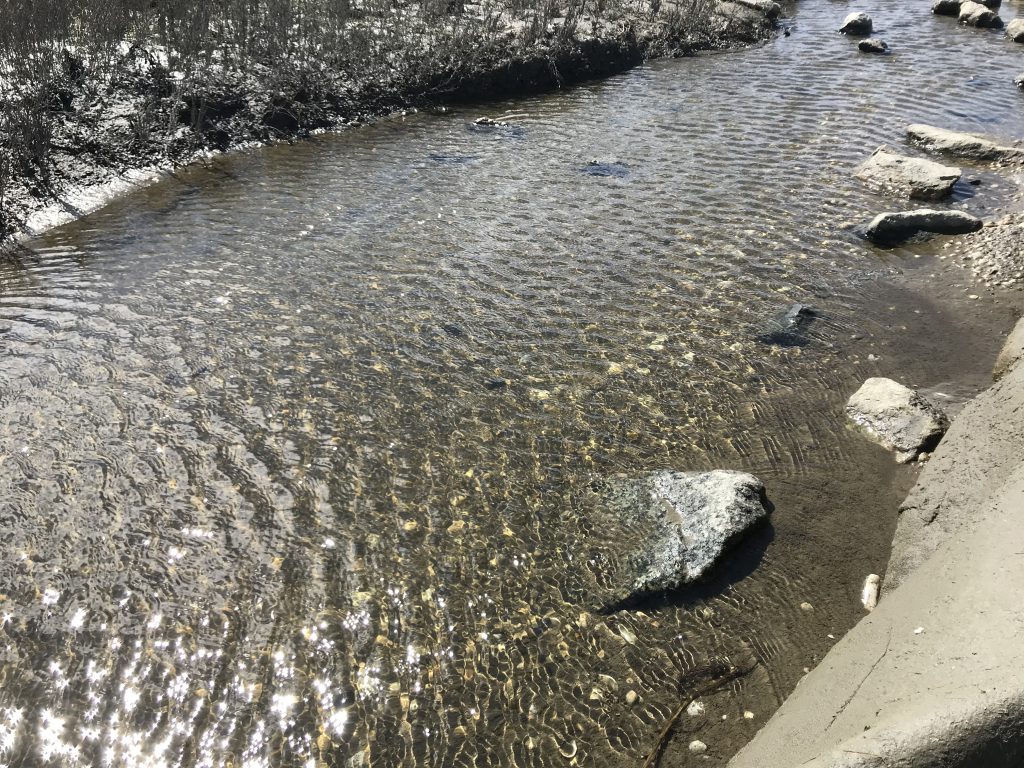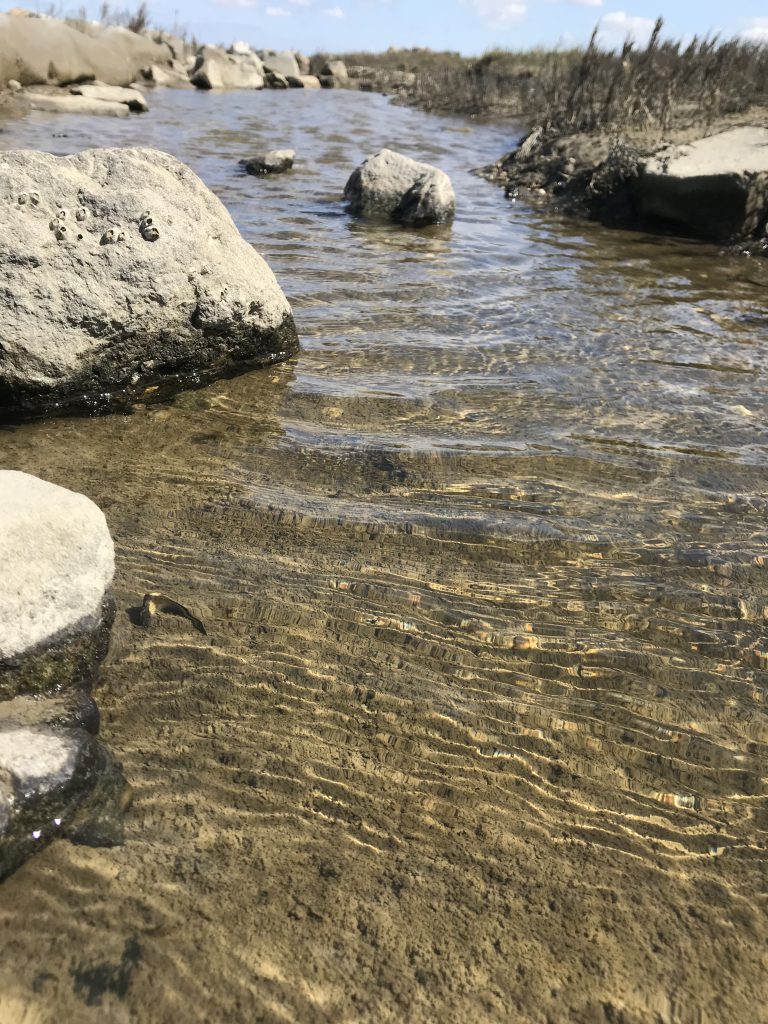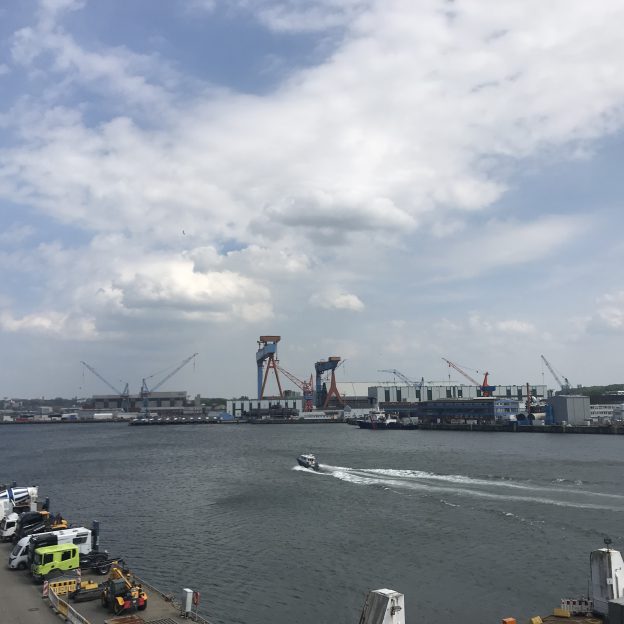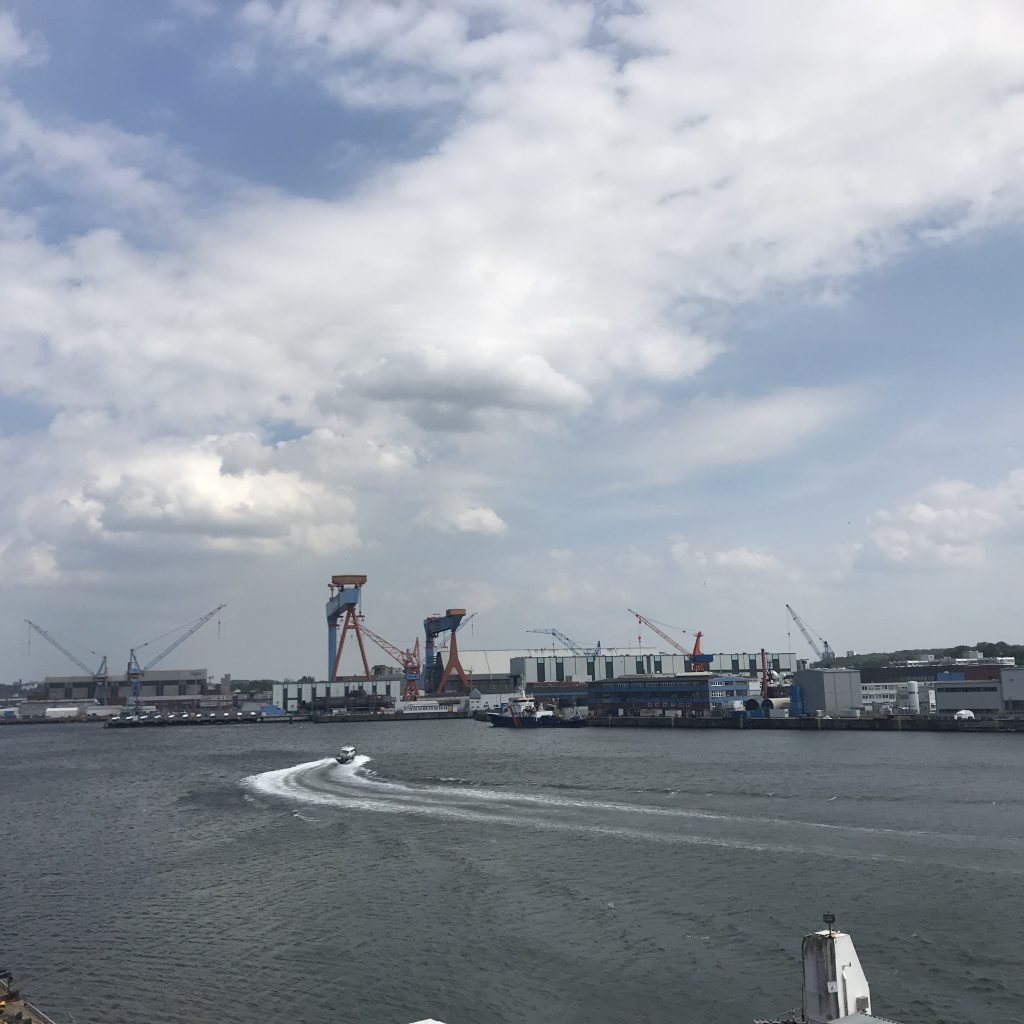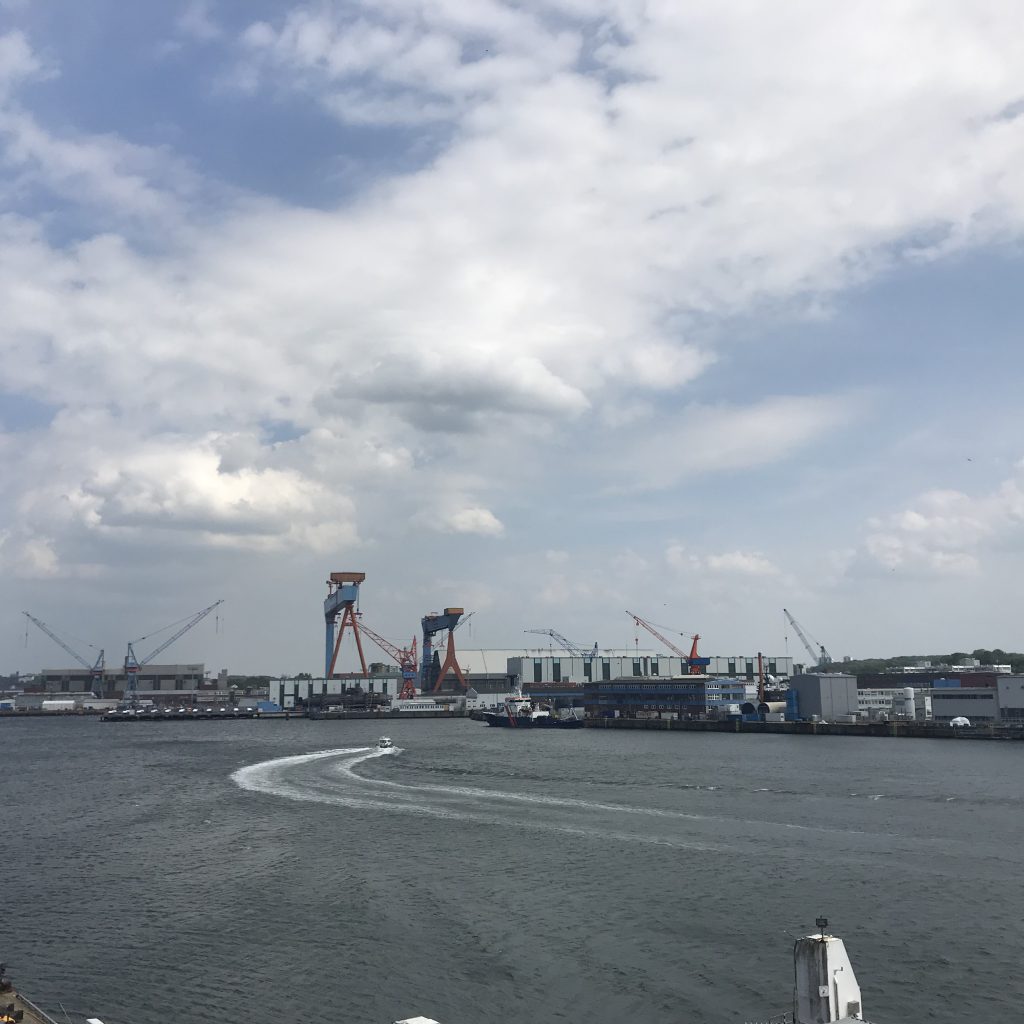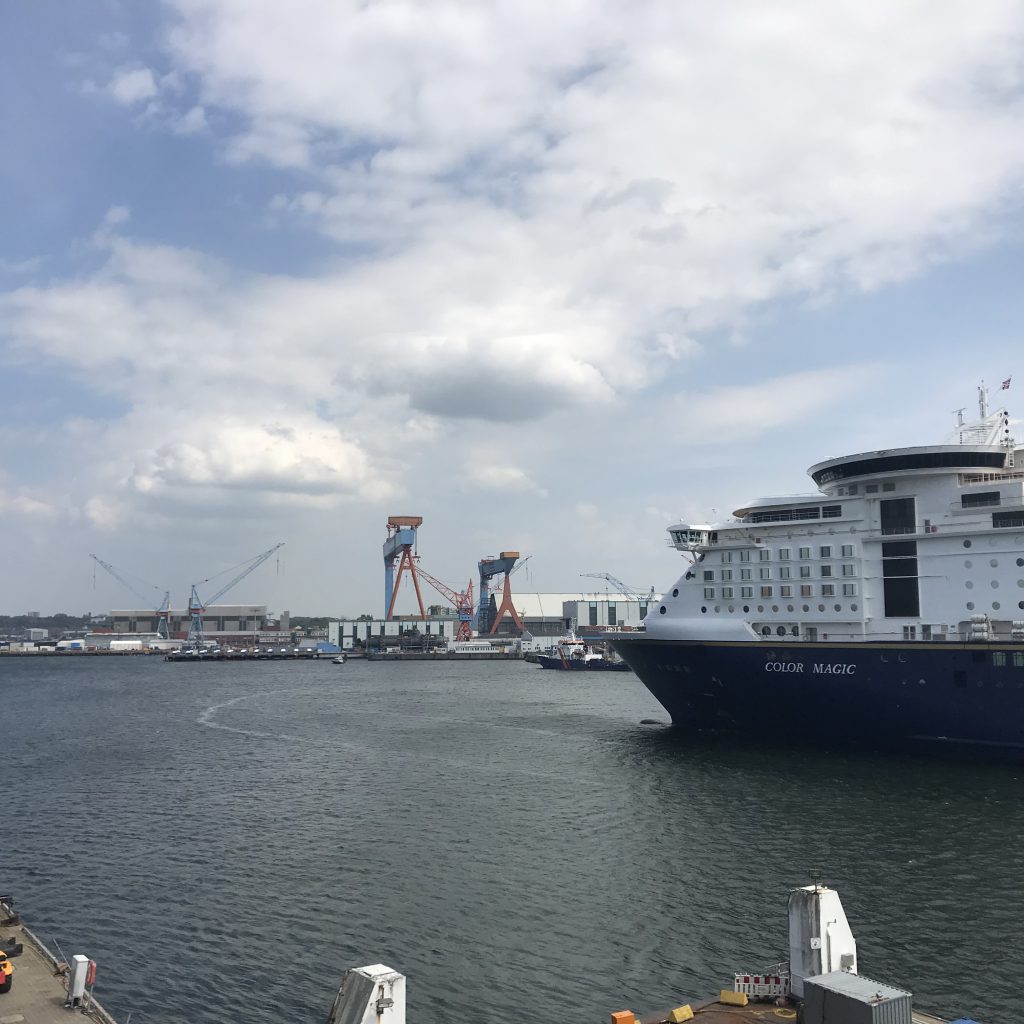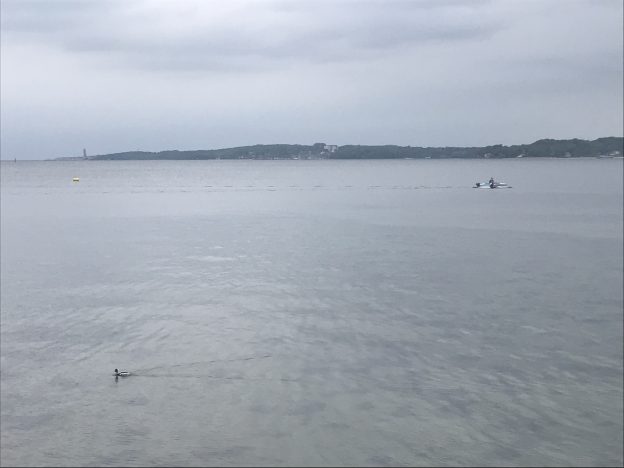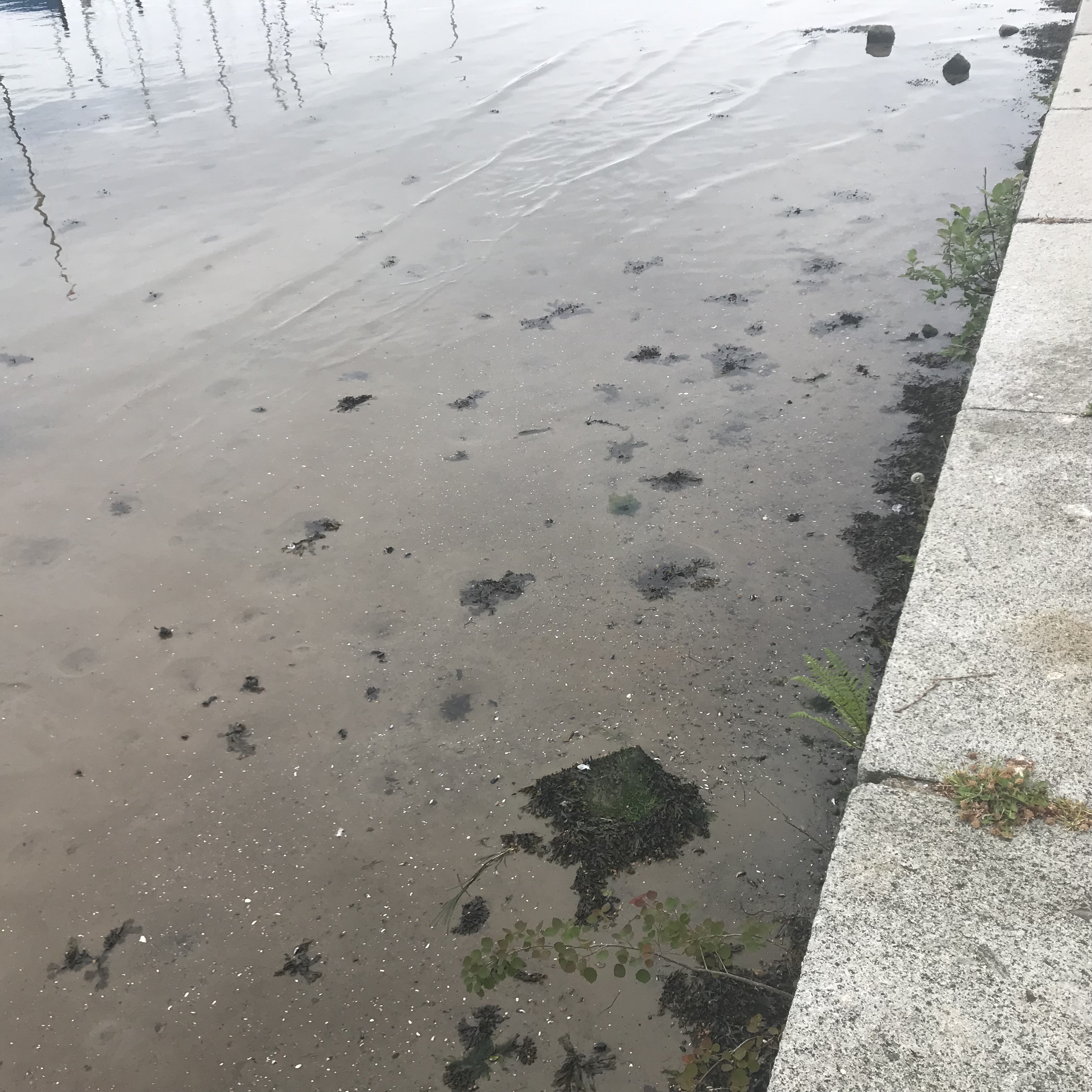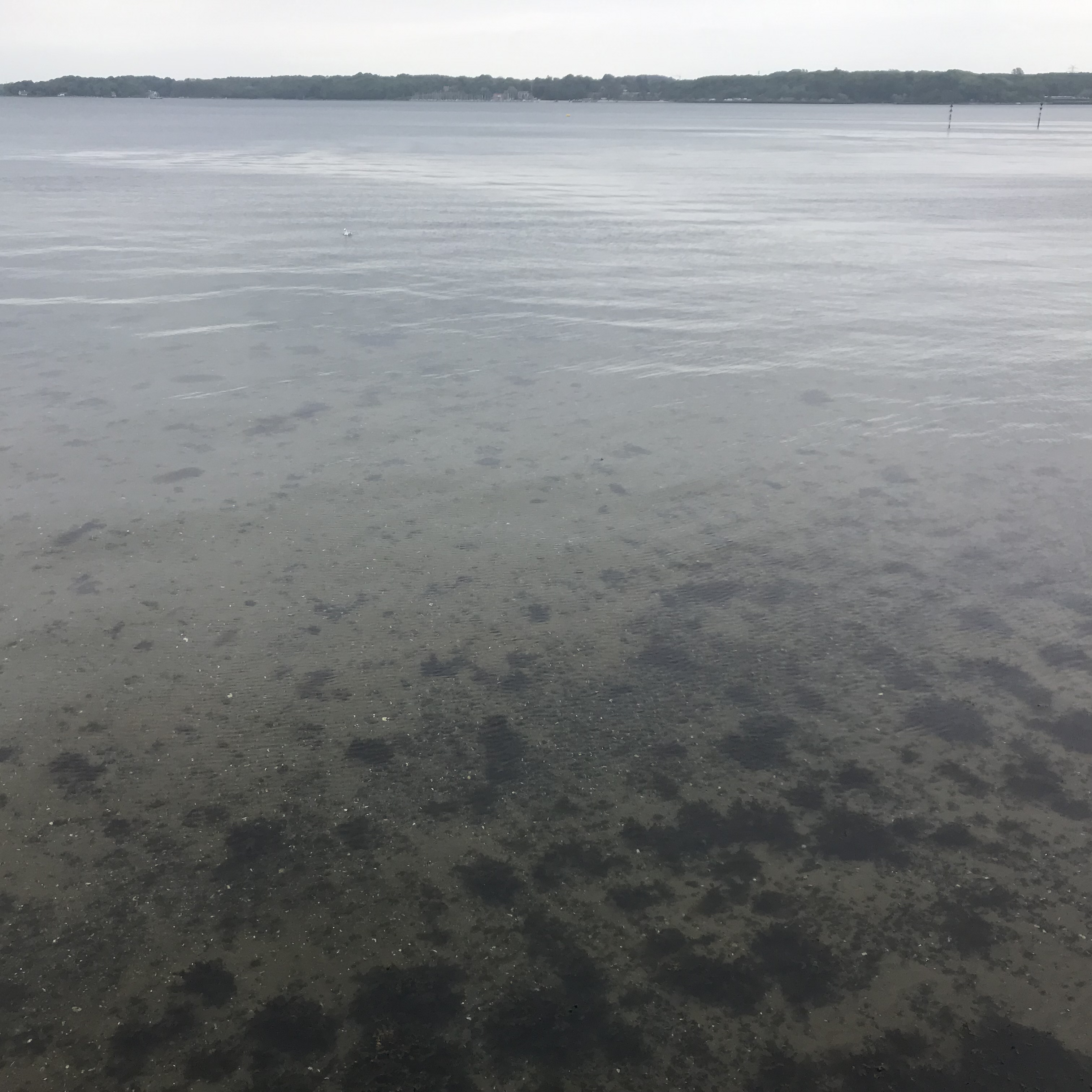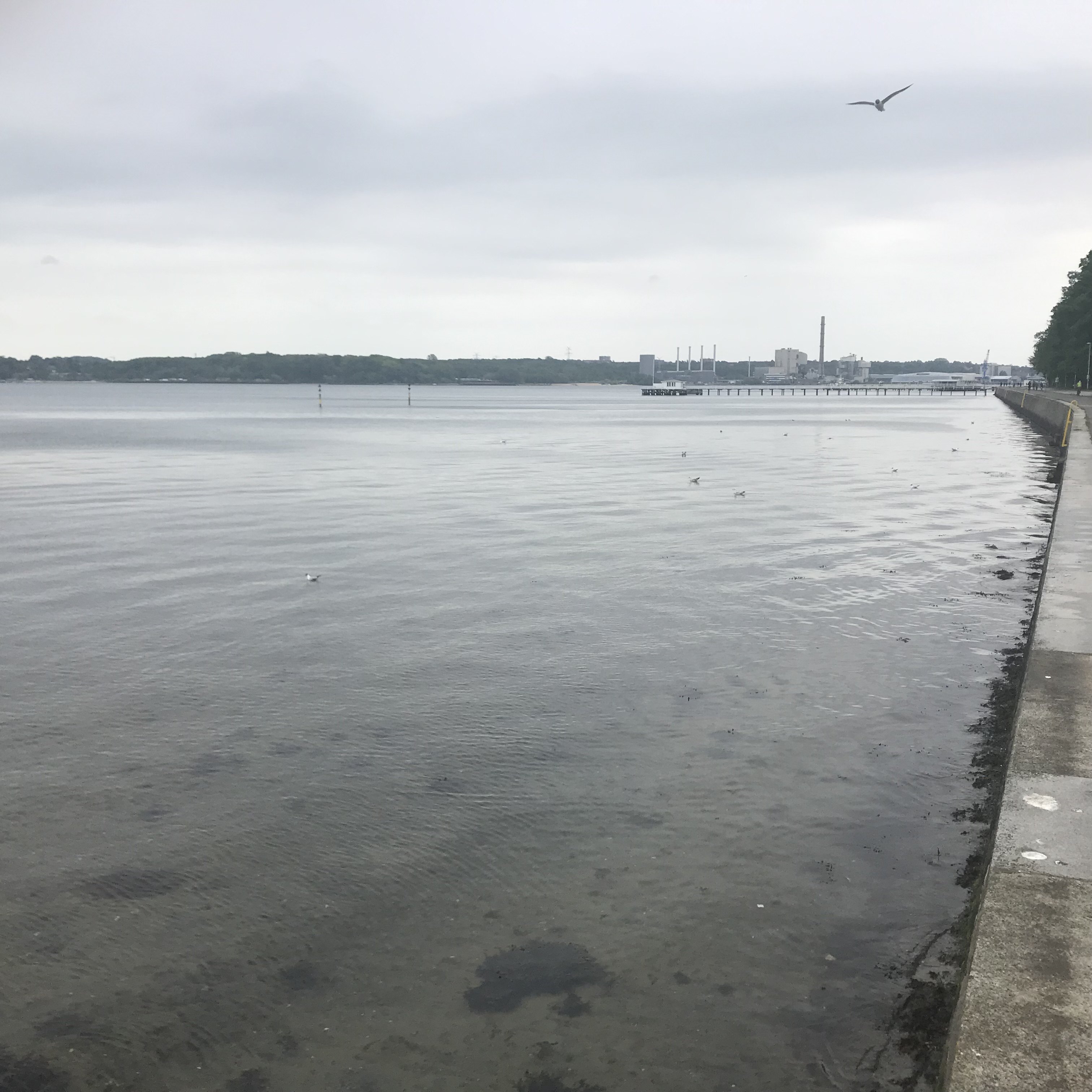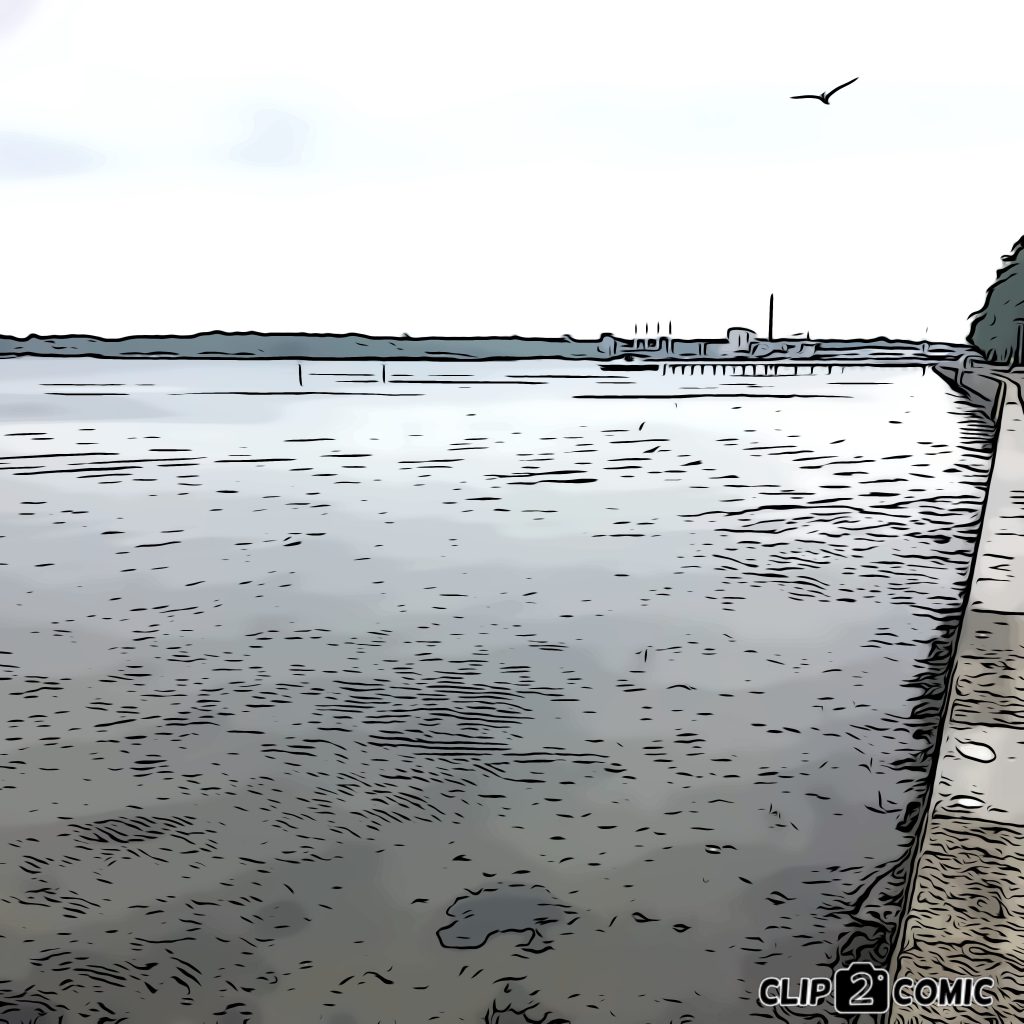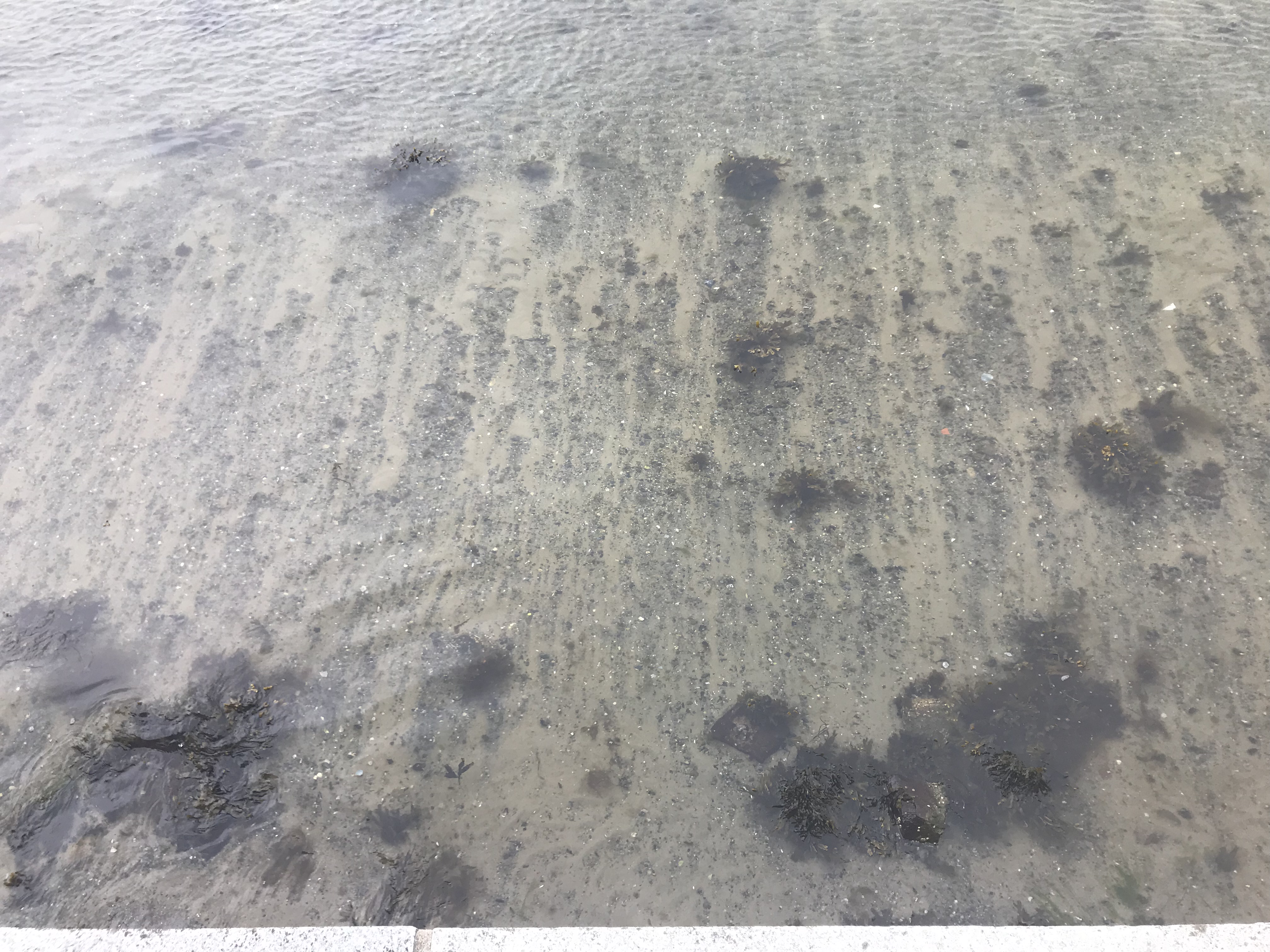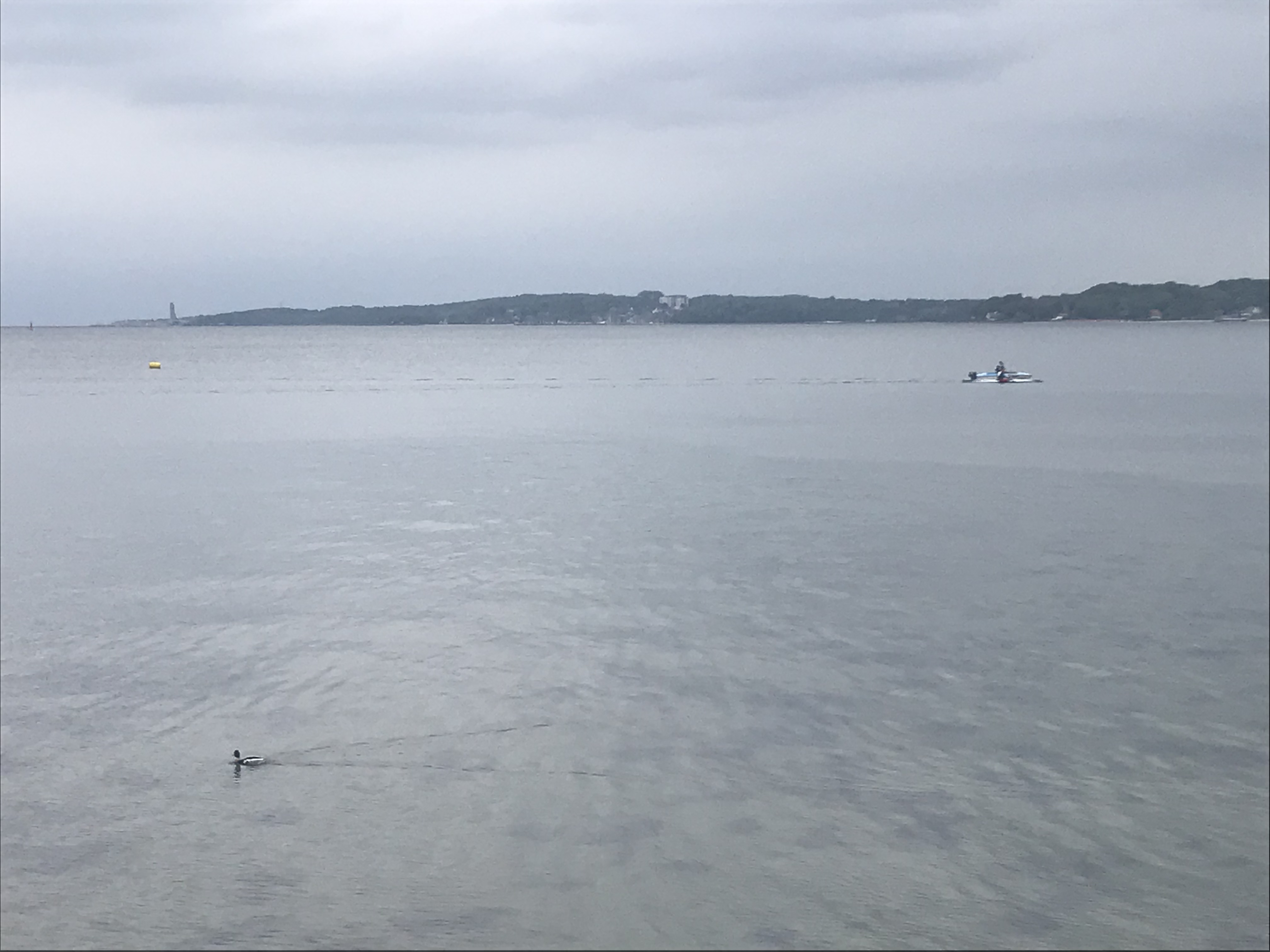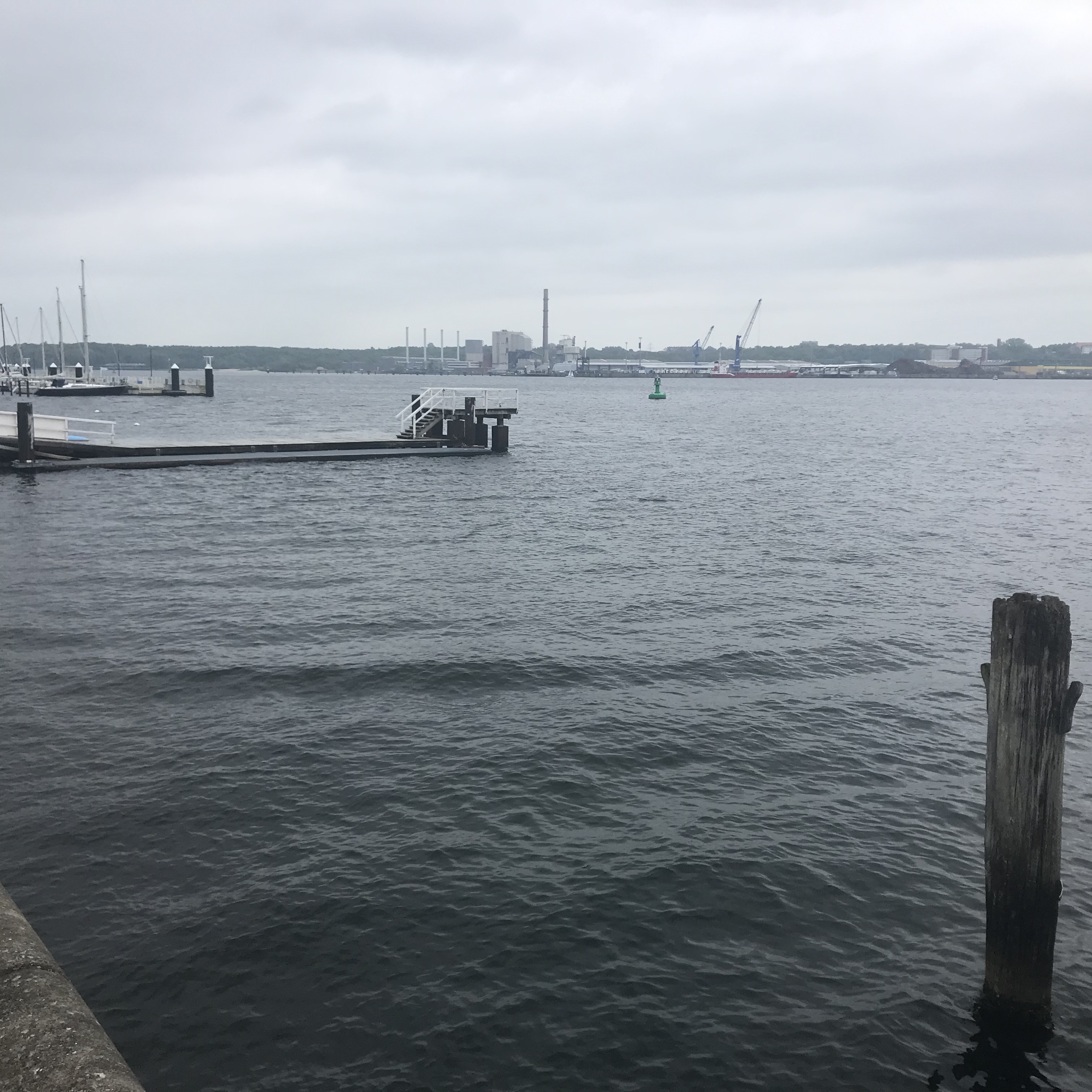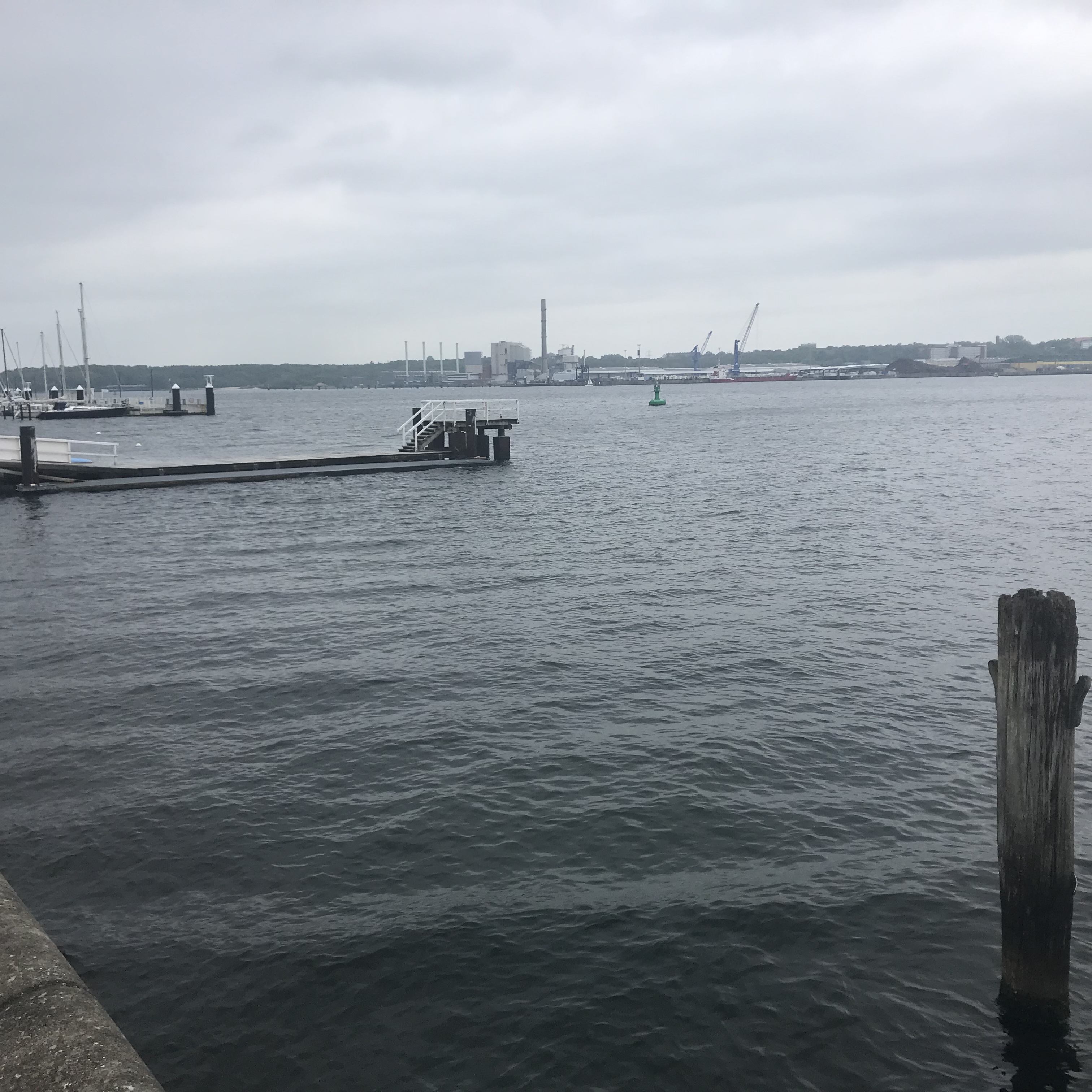On our work trip to Brodowin to prepare the GEO-Tag der Natur (which will take place here only a little more than a week from now! Crazy!), I had the chance to do some cool wave watching on different lakes.
Above, for example, you see wind waves coming in from the right, and their very distinct reflection on the left row boat.
Below, at the stern of the left row boat, you see a sudden gust of wind, causing lots of capillary waves, and thus high surface roughness.
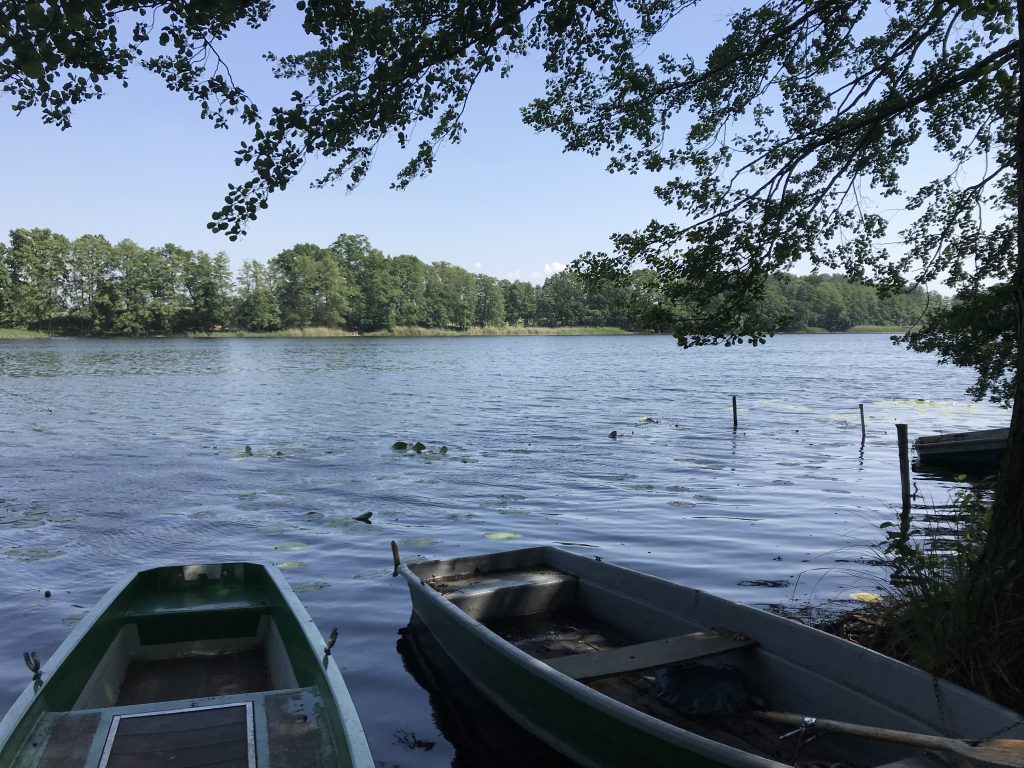
And below, what would you guess is the secret to the ring waves radiating away from the end of the pier? It’s a surf board, bobbing up and down in the incoming wind waves!
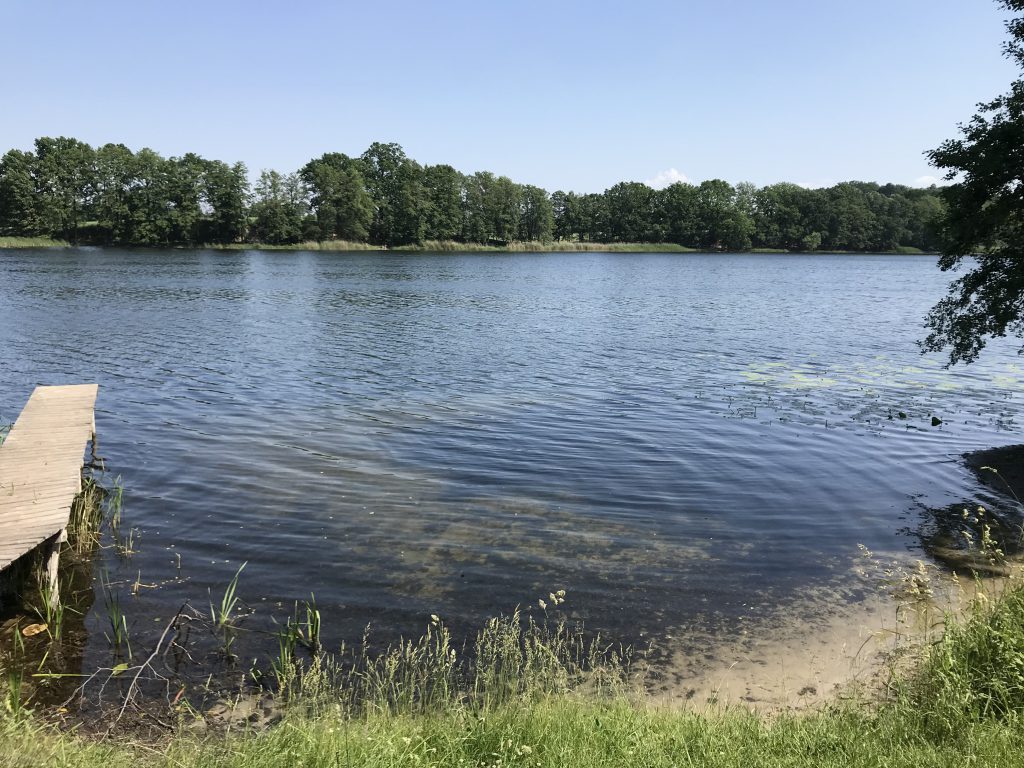
I just love looking at water, it has such a calming effect on me, even in 35 degrees heat (which I am really not good with).
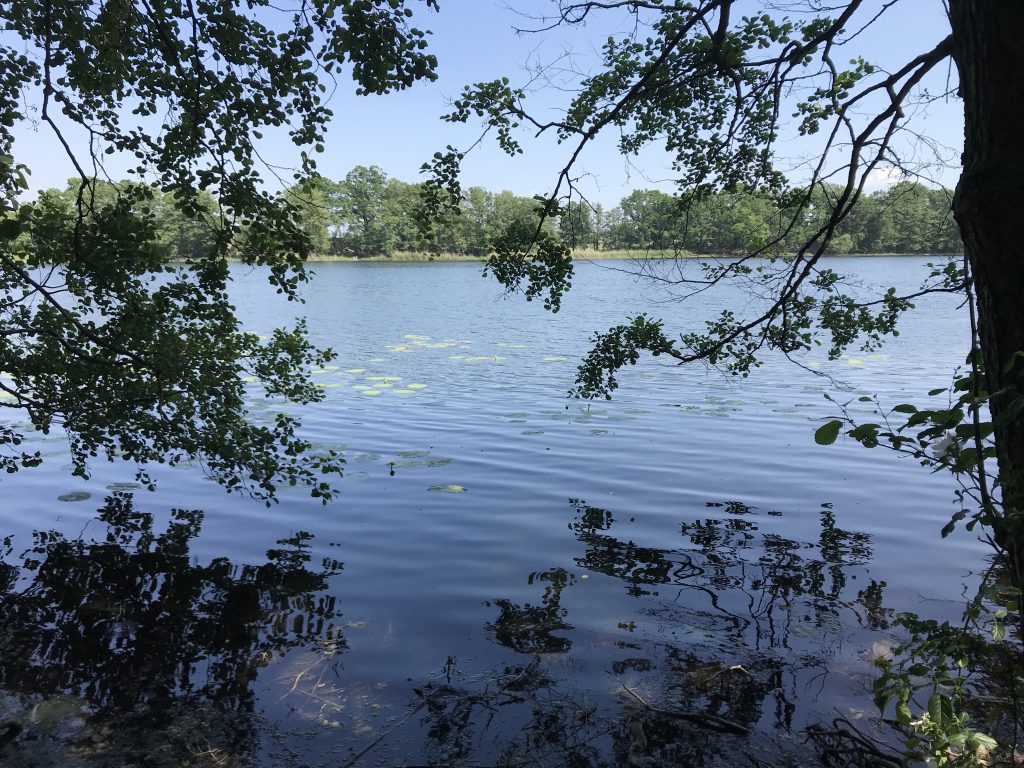
I love to see how the more lively wave field offshore gets calmed down as only longer wave lengths make it through the water lily frequency filter! And how the wave crests get bend as they reach the shallow shore.
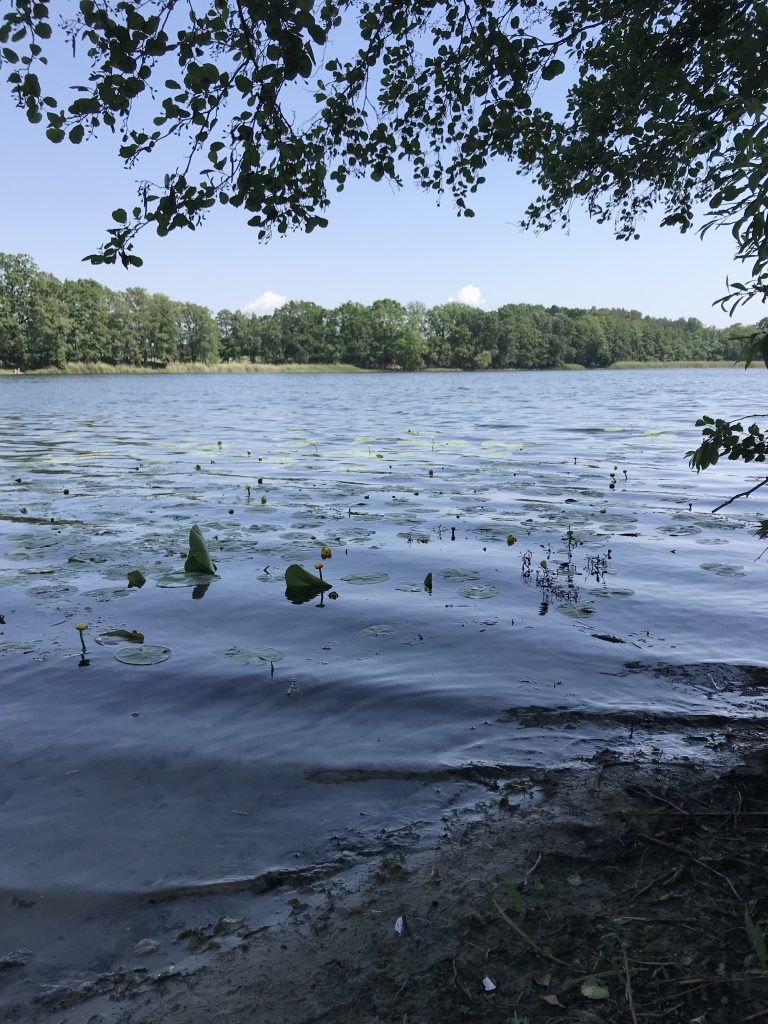
Now, different lake. This one is 38 m deep! Would you have guessed that?
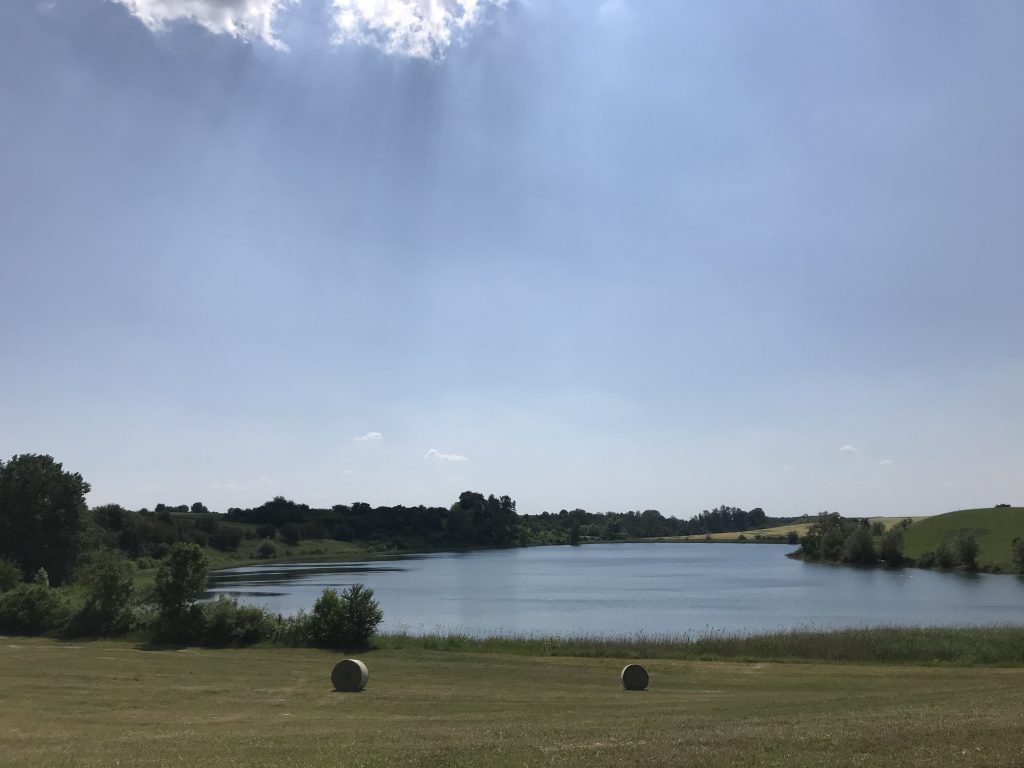
Here you see that we are standing on the downwind side of the lake: Smooth water on the other edge in the lee of the land, then, after sufficiently large fetch, waves that grow more and more the further they have progressed over the lake.

Same lake, same phenomenon, different view.

And the last bit of the lake just to give you an impression of the glacial landscape it is situated in, explaining the very steep slopes and the 38 m depth.
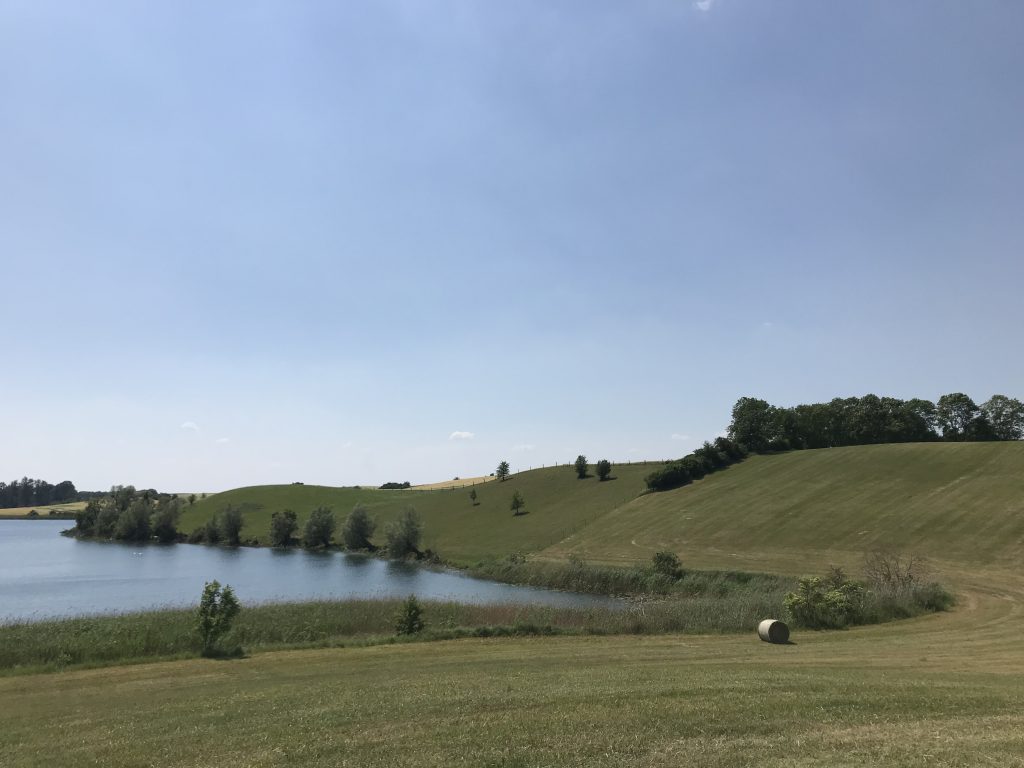
This would be such a lovely place to sit at and enjoy the view, if only there was a little shade…
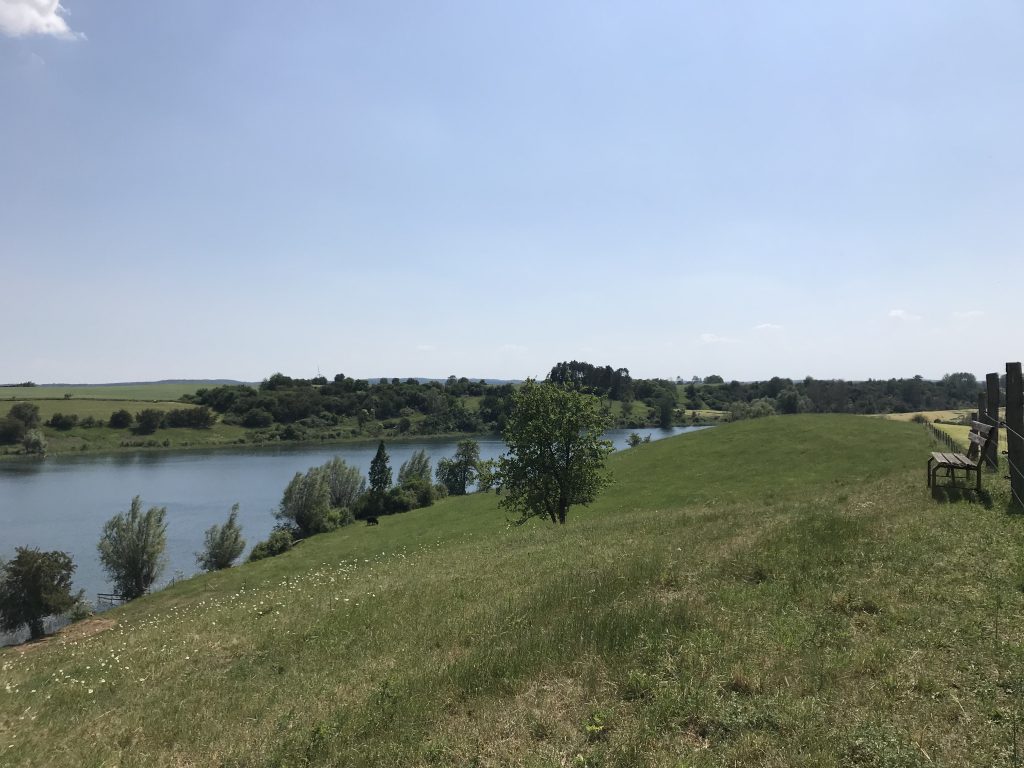
I find it fascinating how the shape of the waves doesn’t change as they approach the shore. That’s because the shore is so steep that when, at last, the waves start feeling the bottom, they have already reached the edge of the lake and didn’t have time to change their shape.
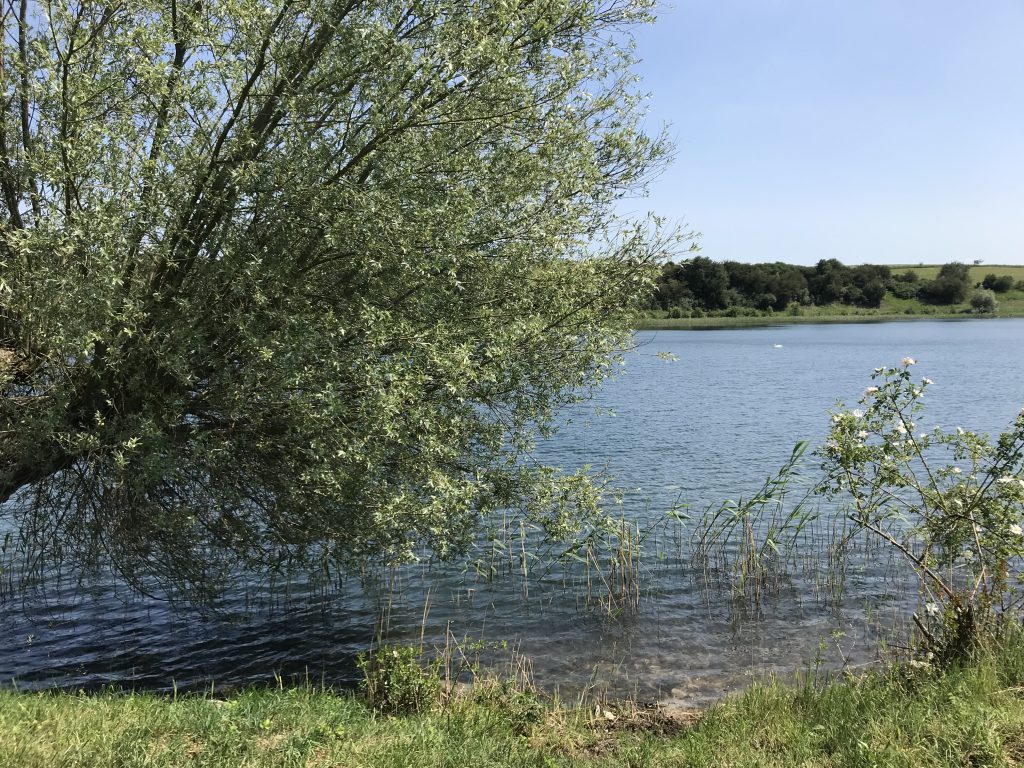
Same phenomenon, different view.
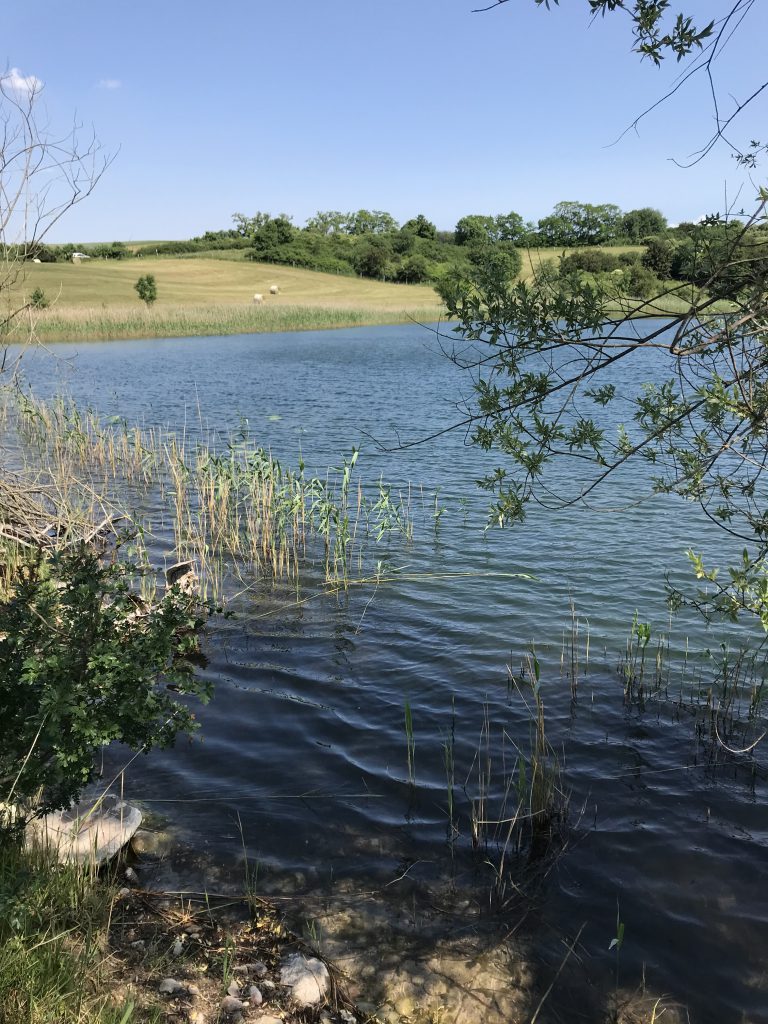
Water is just so amazing :-)
